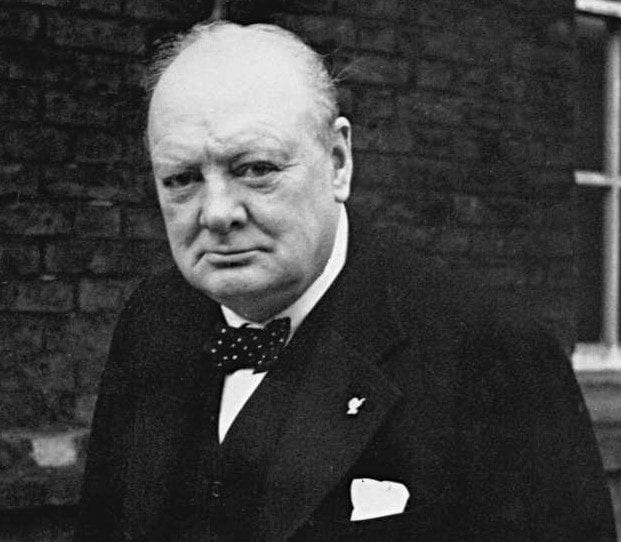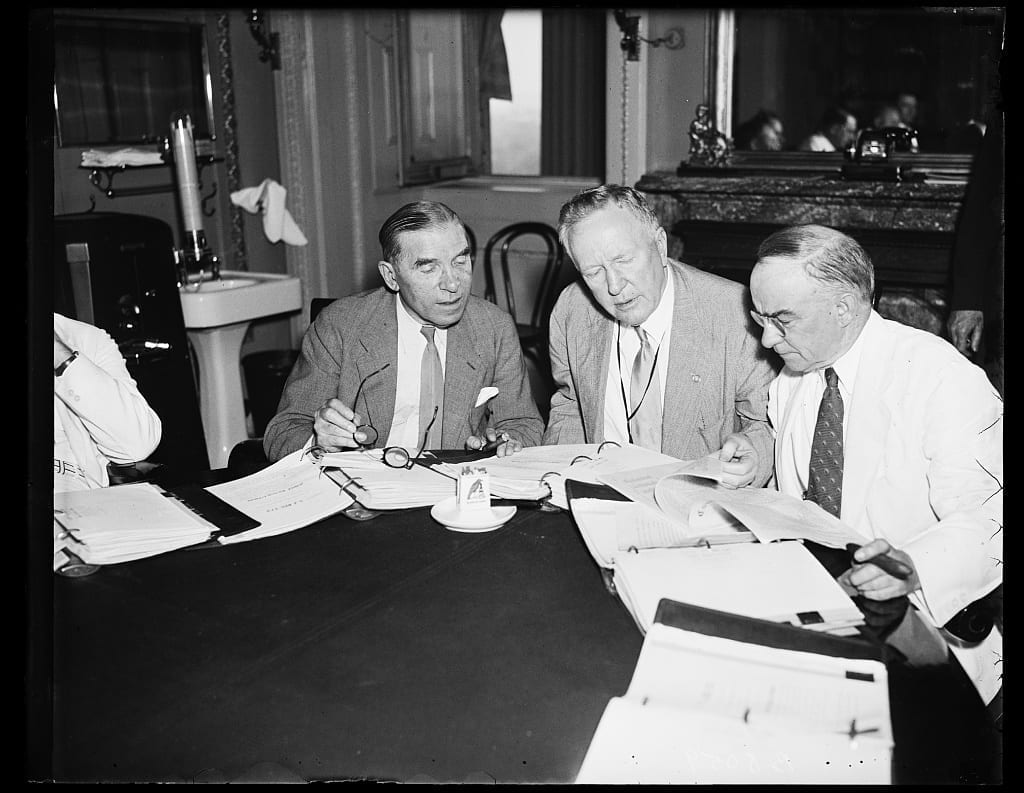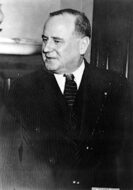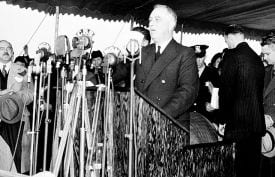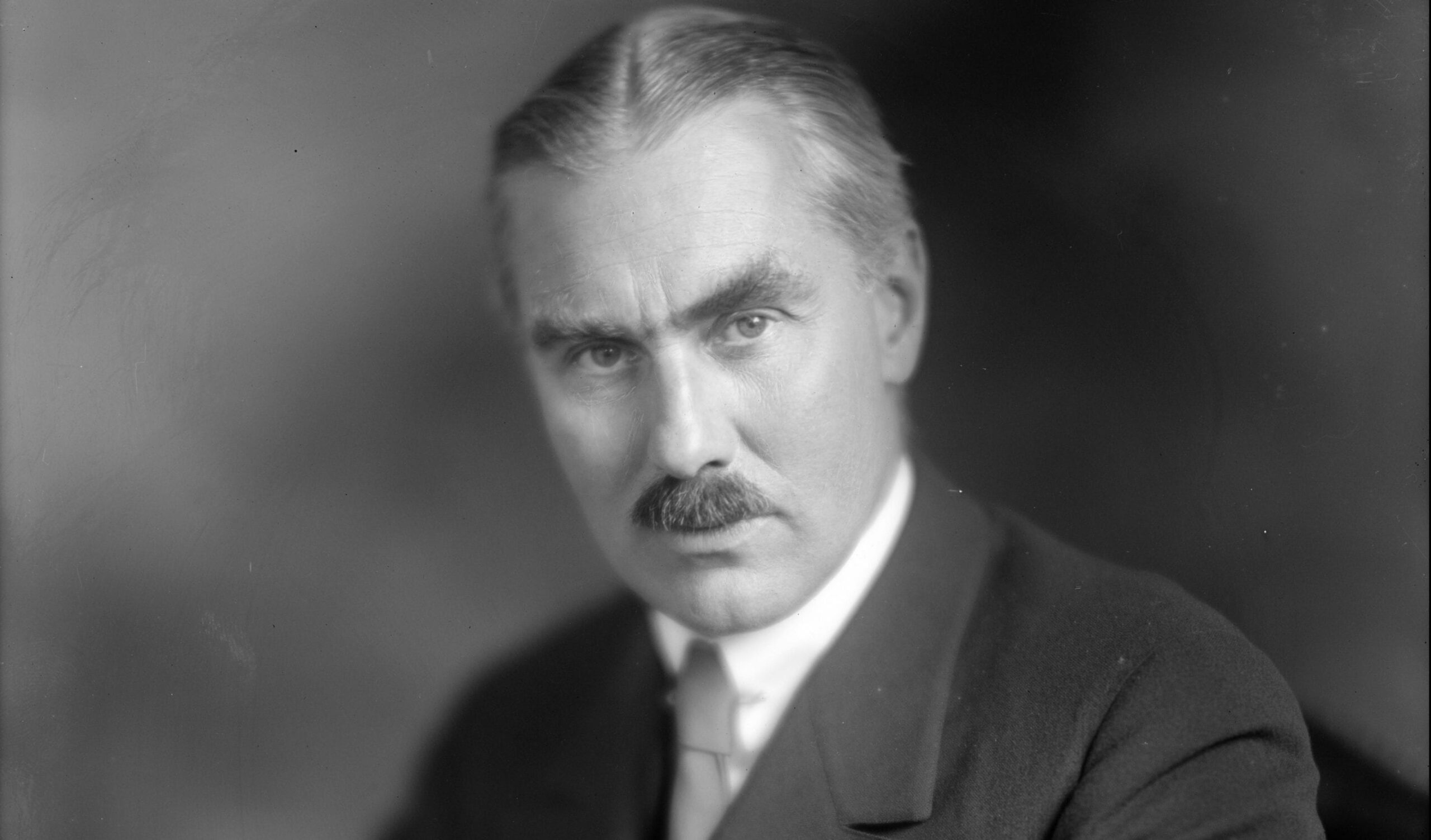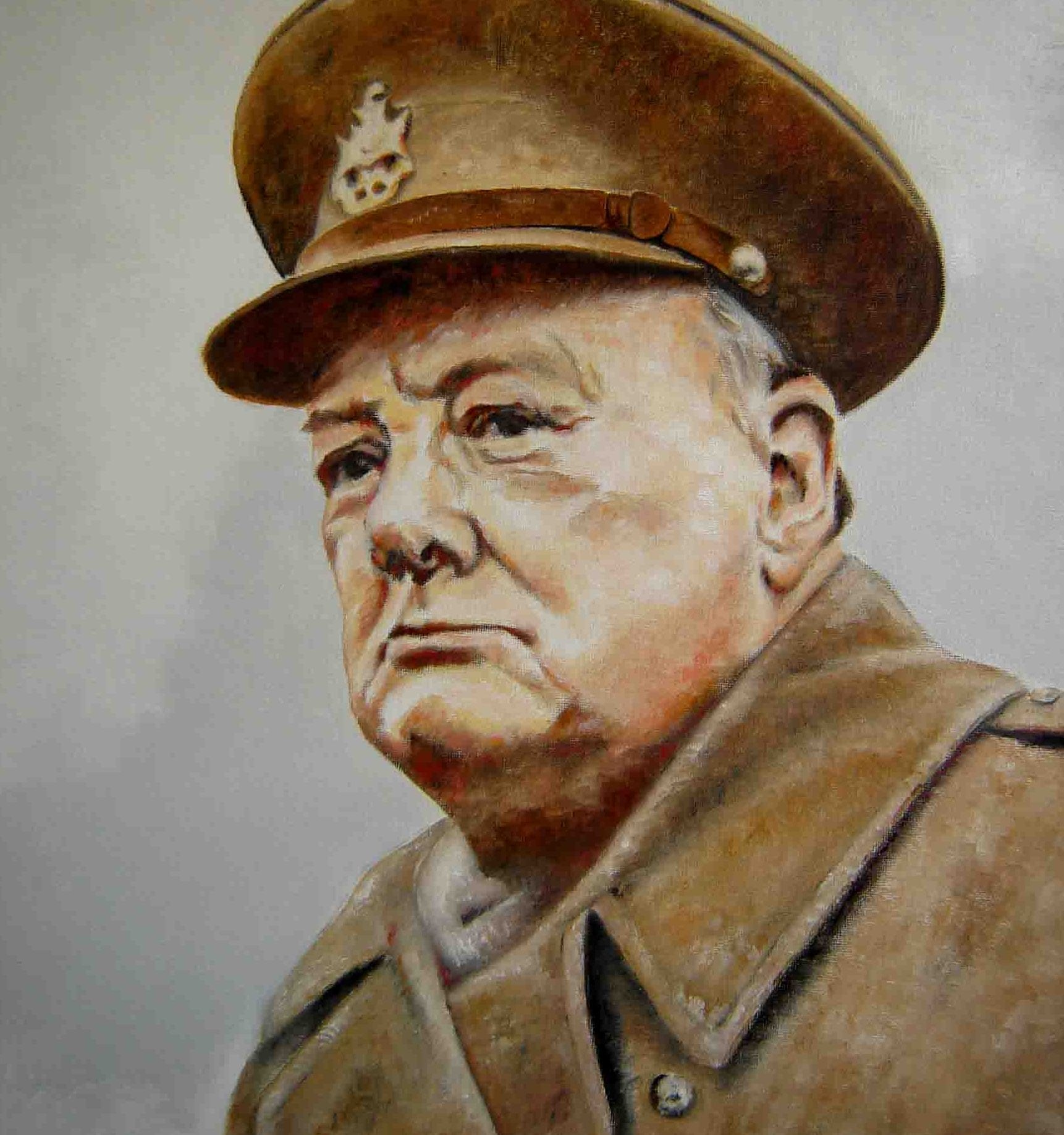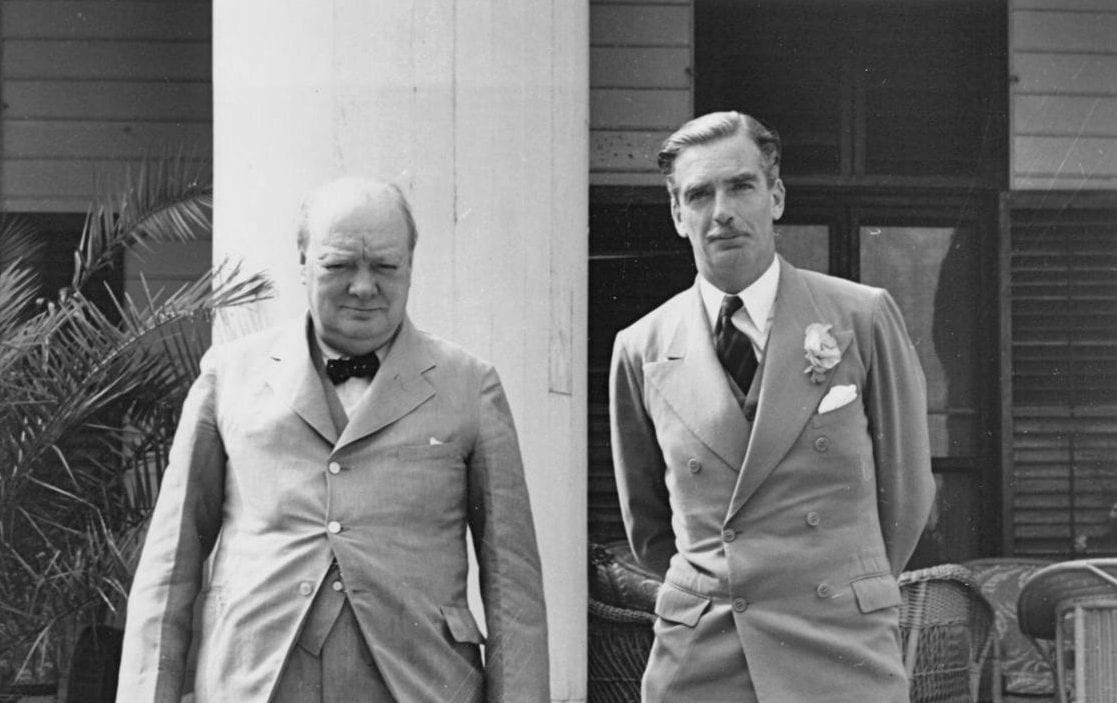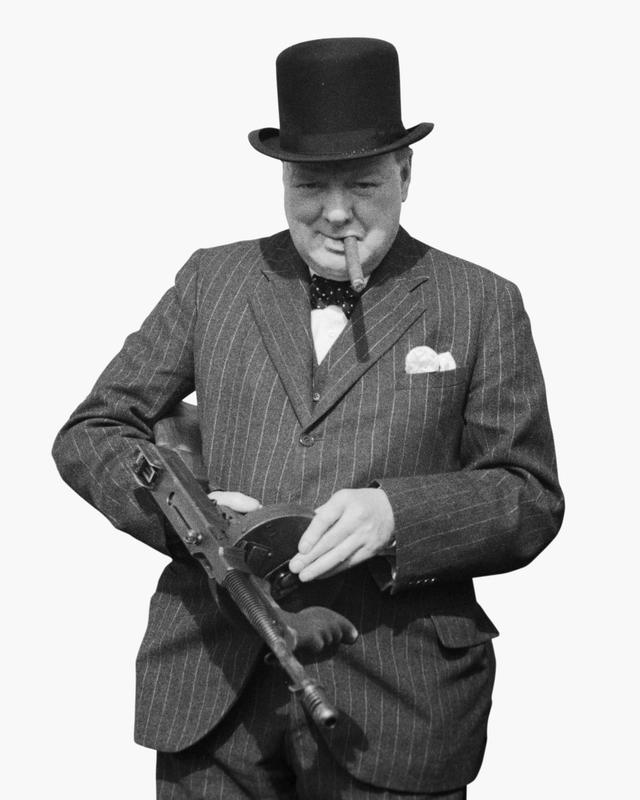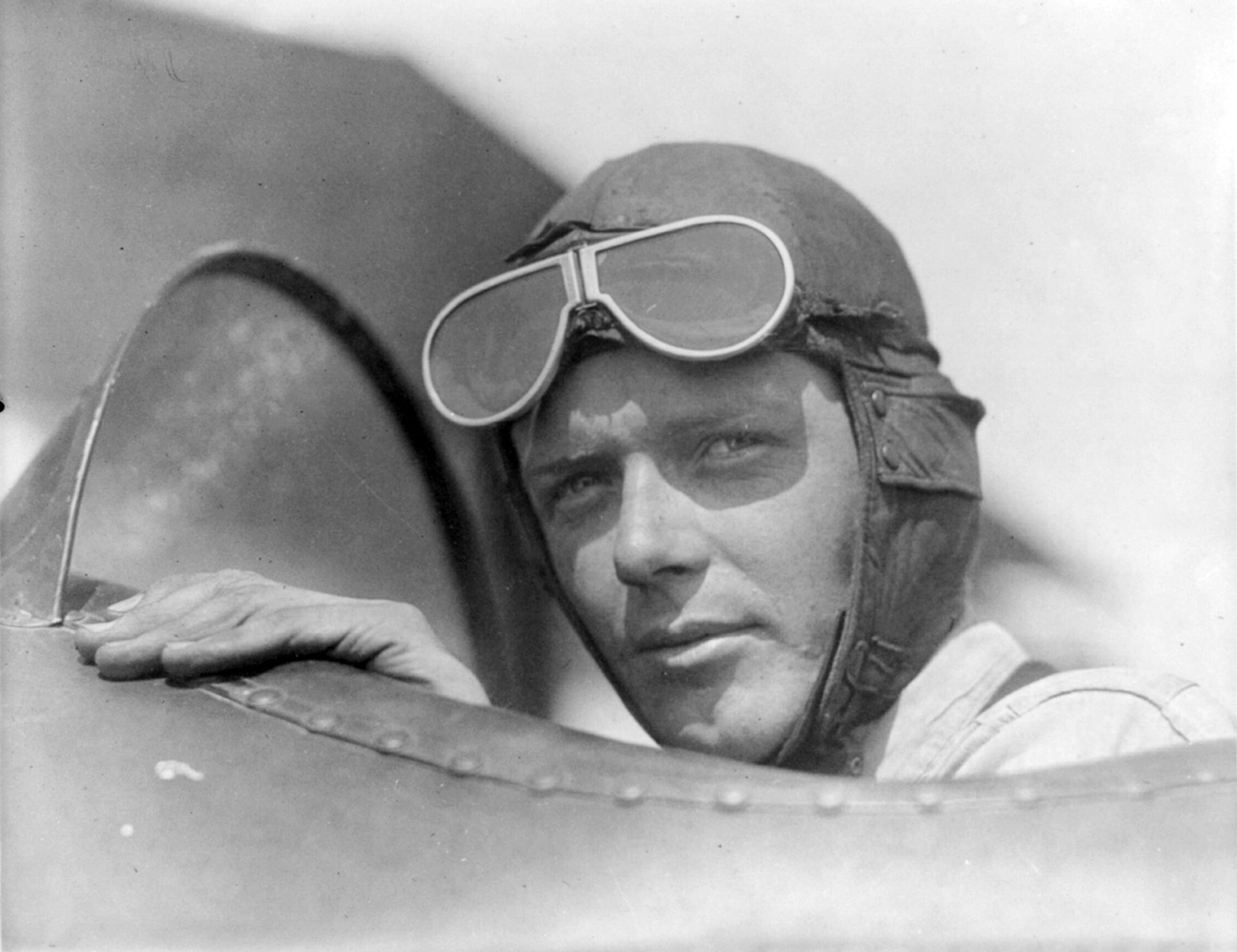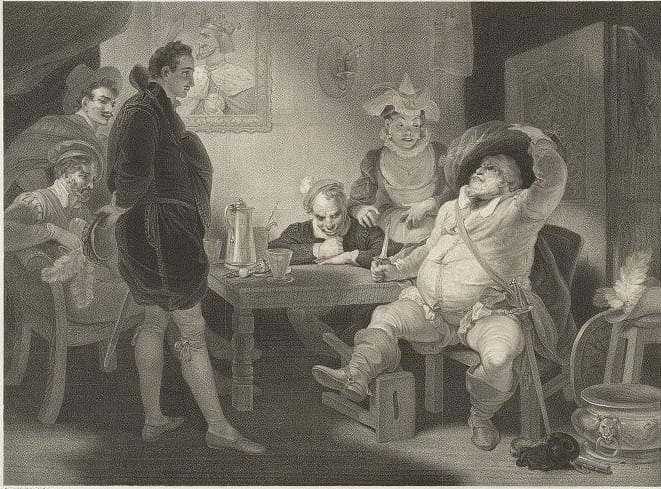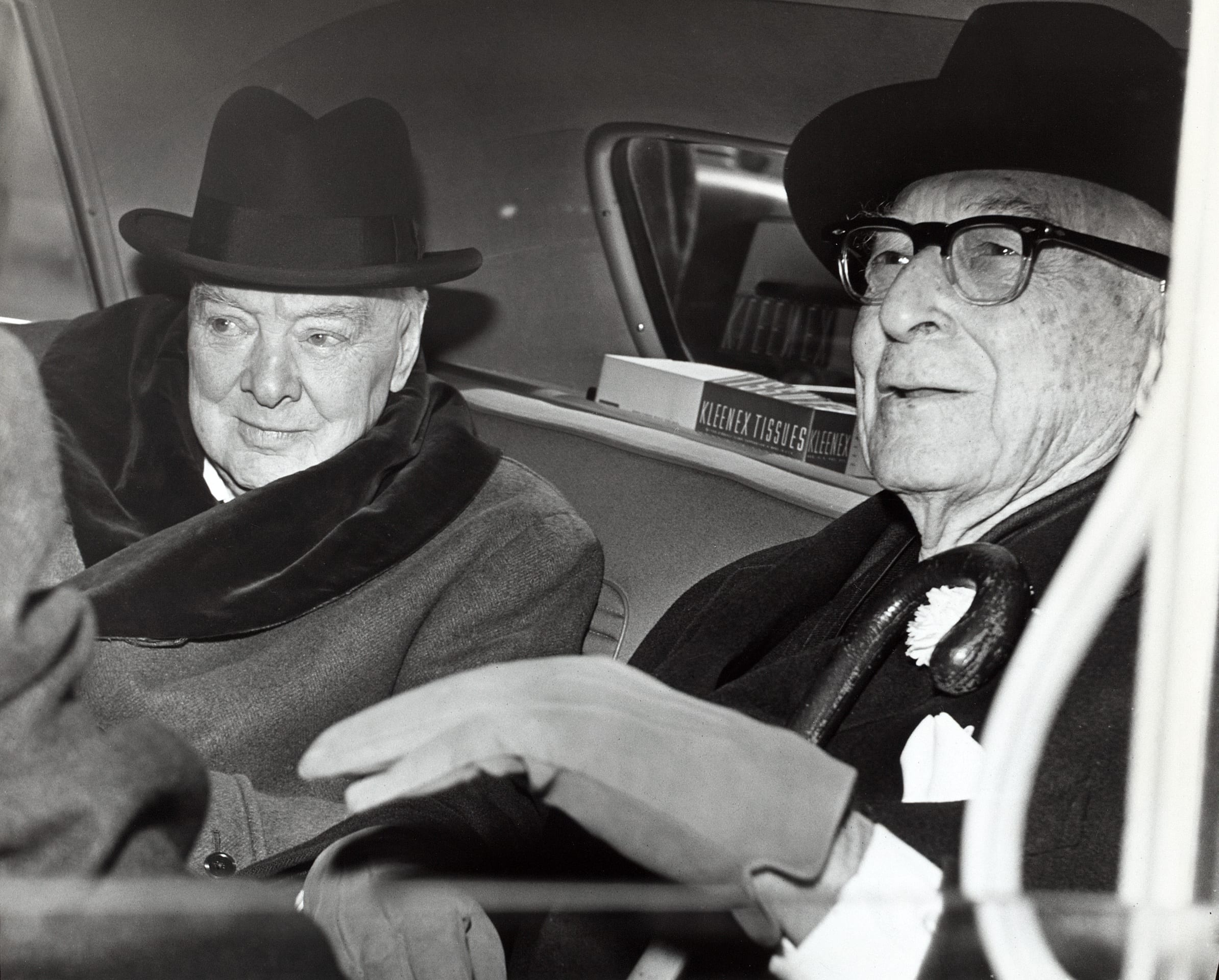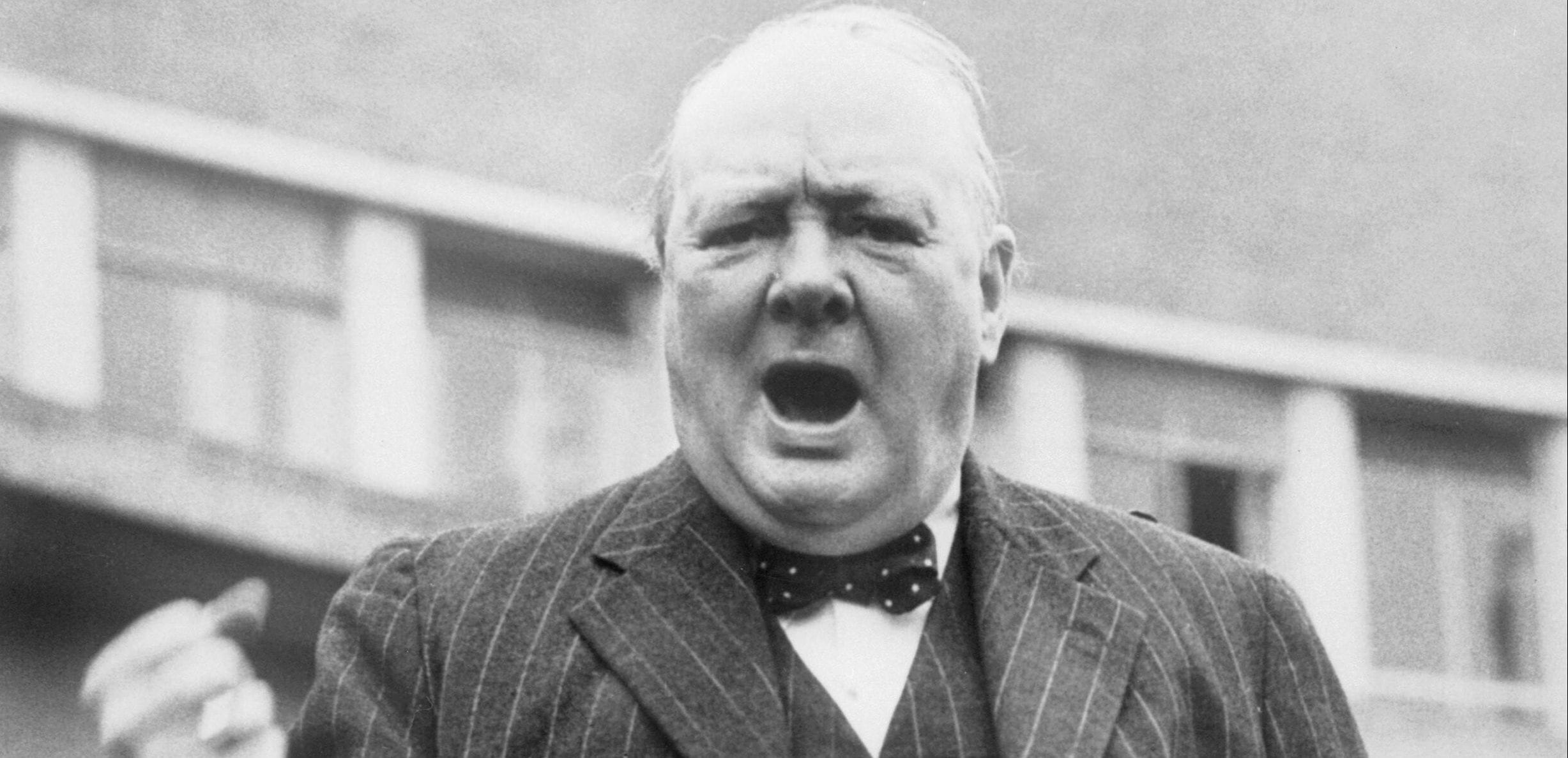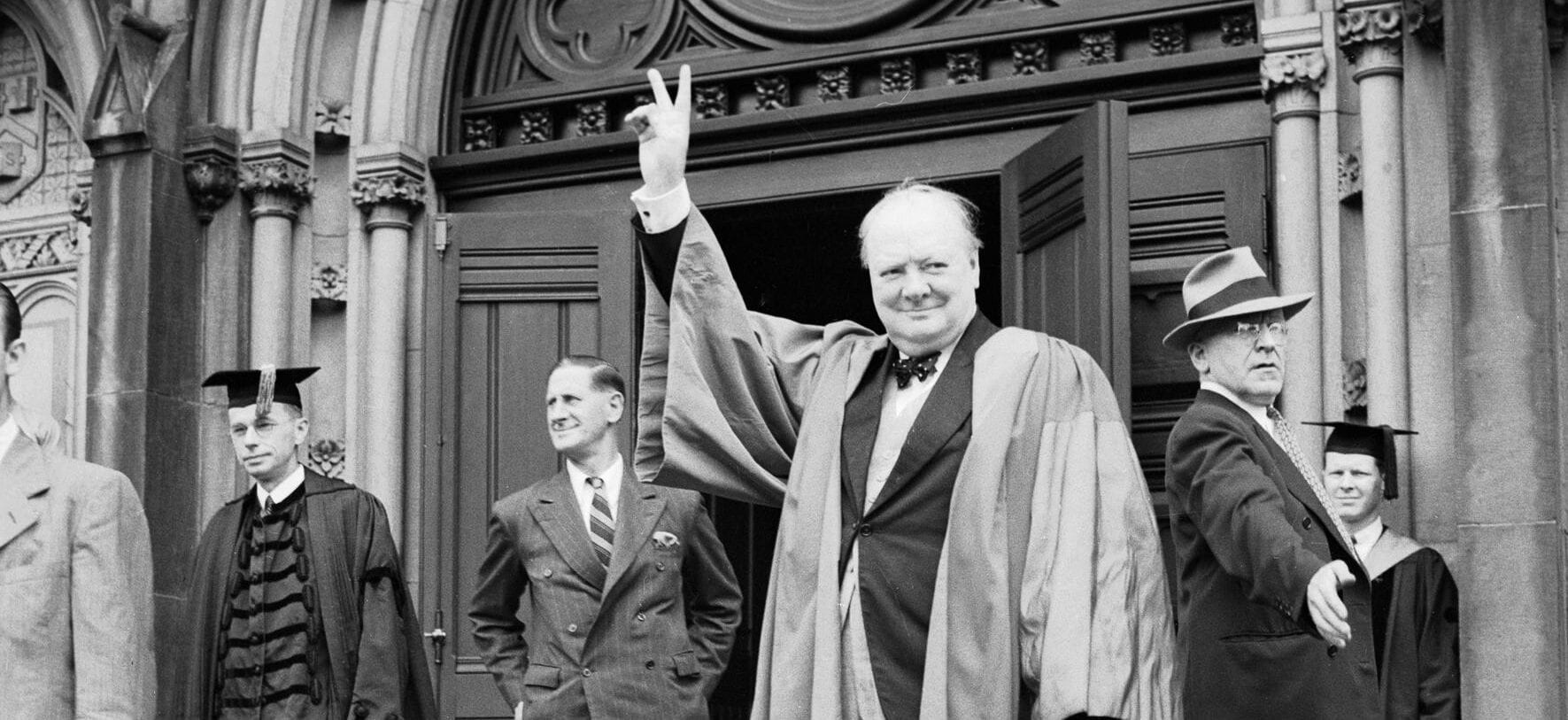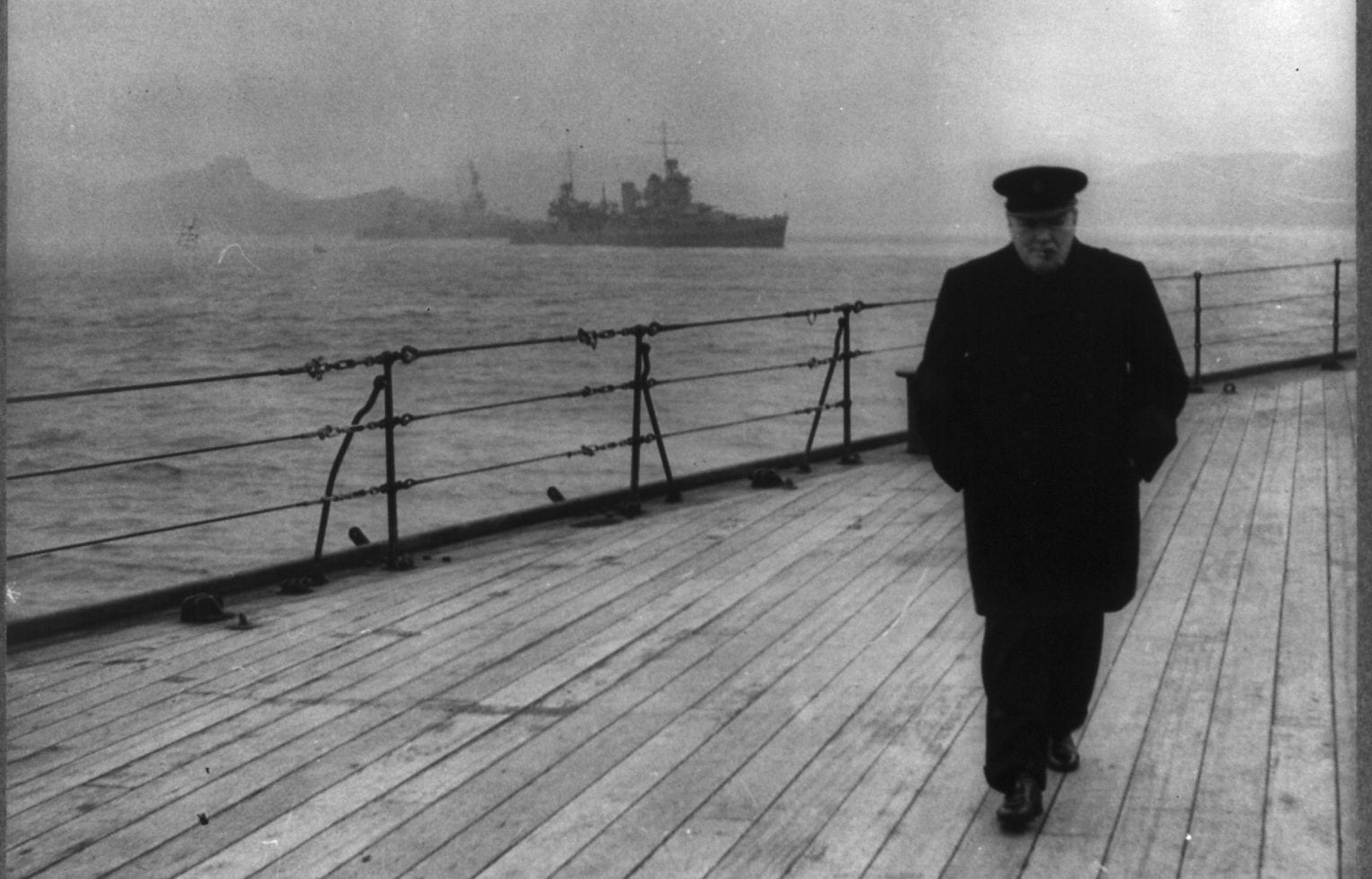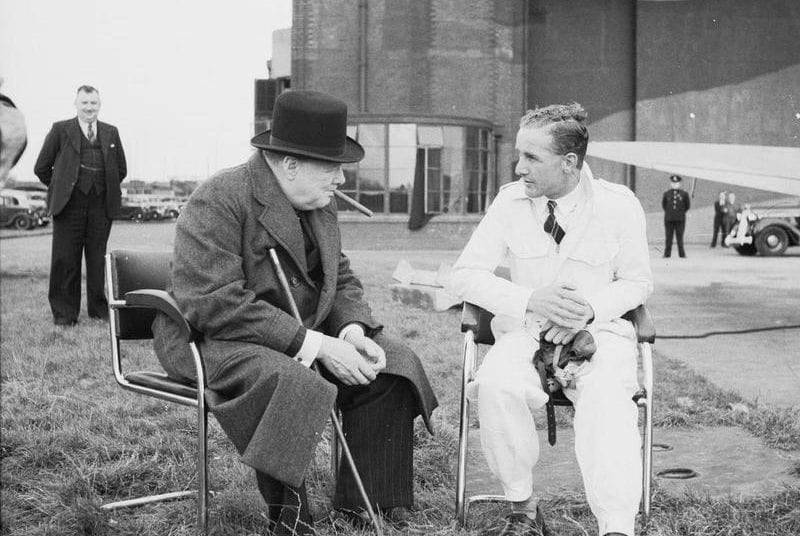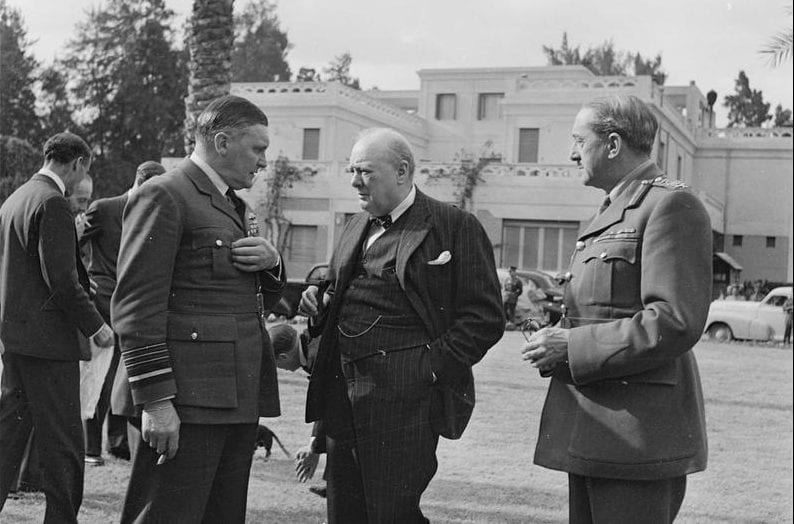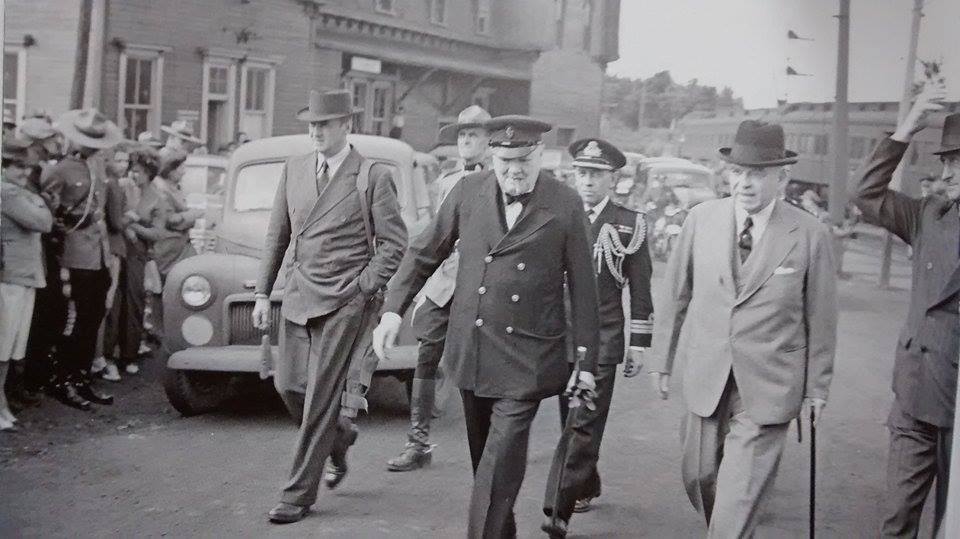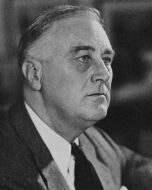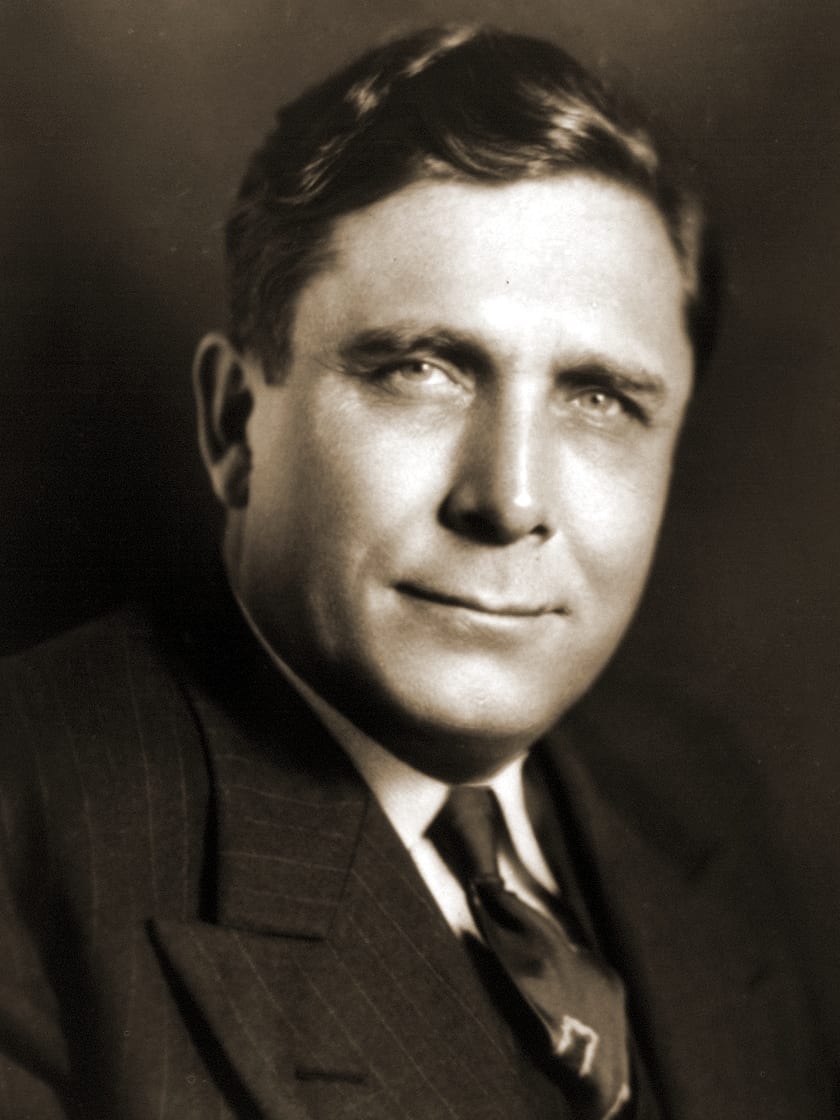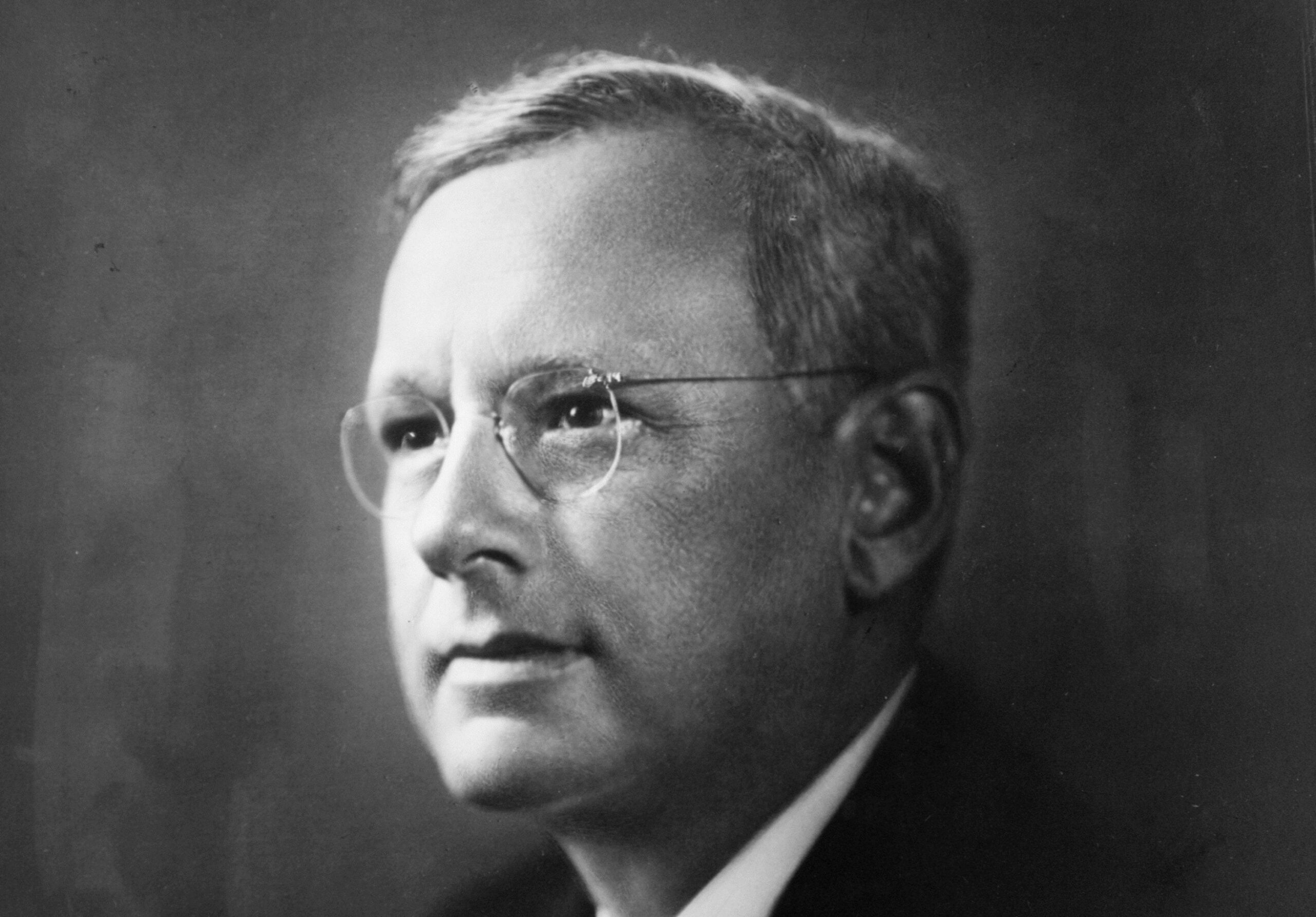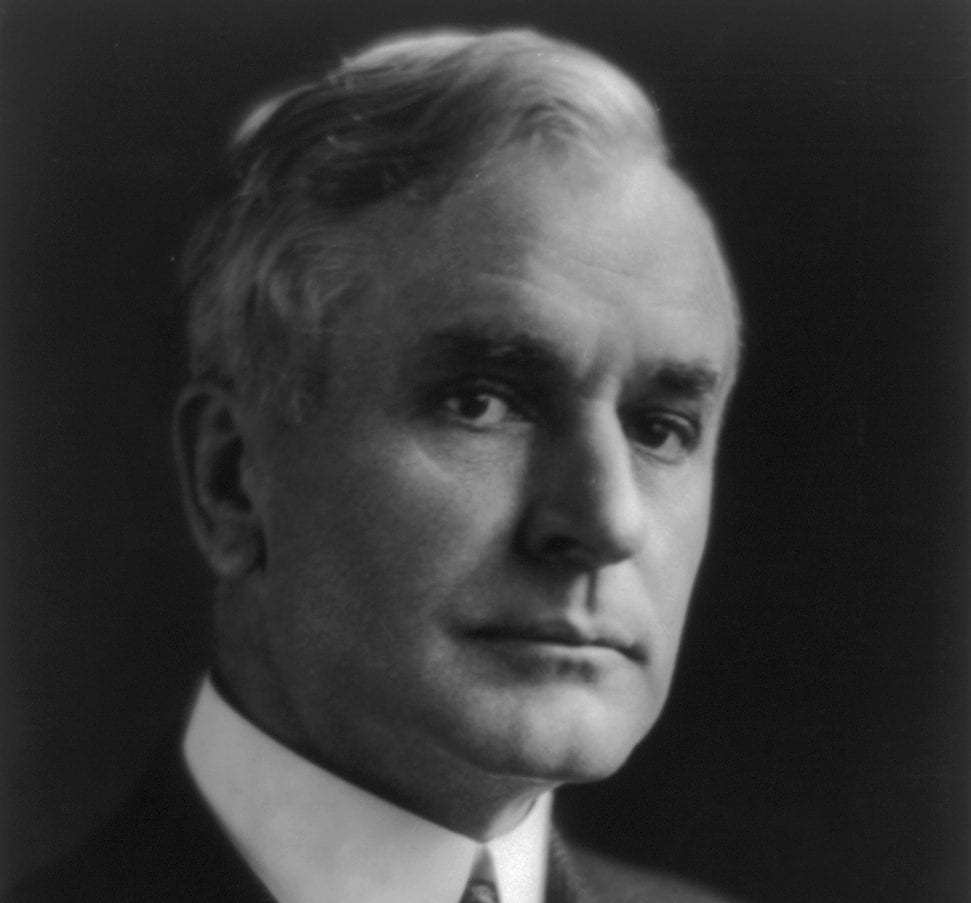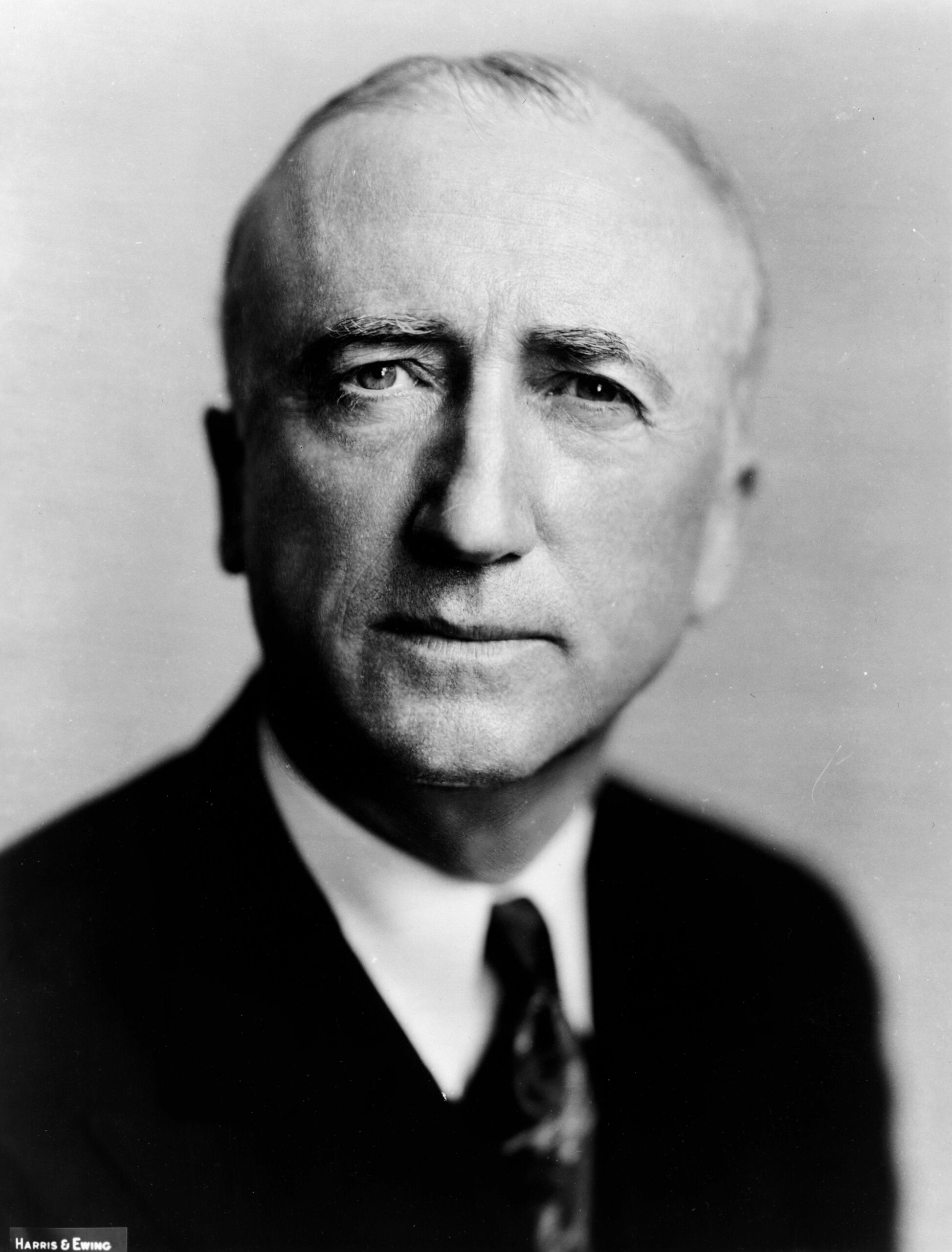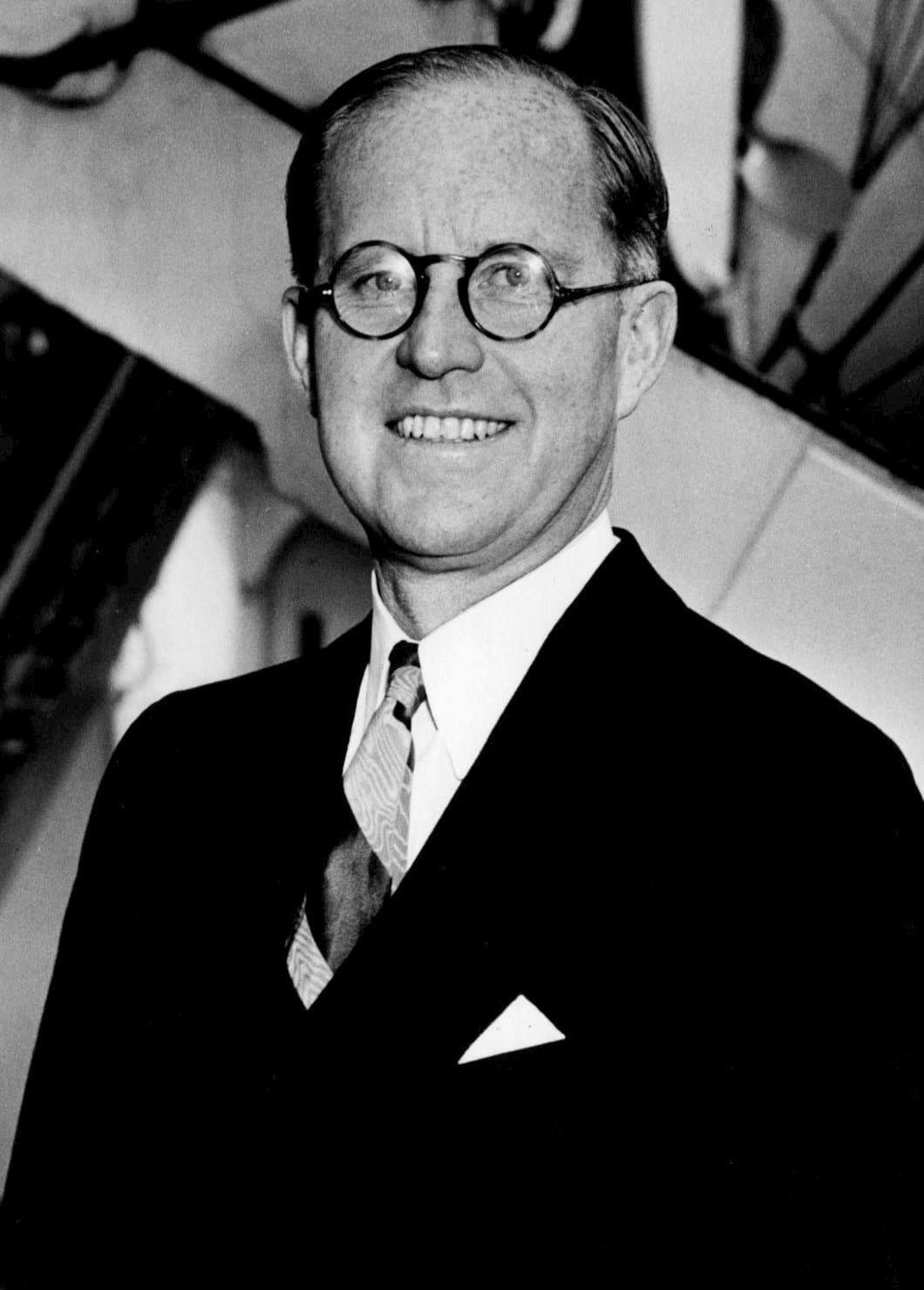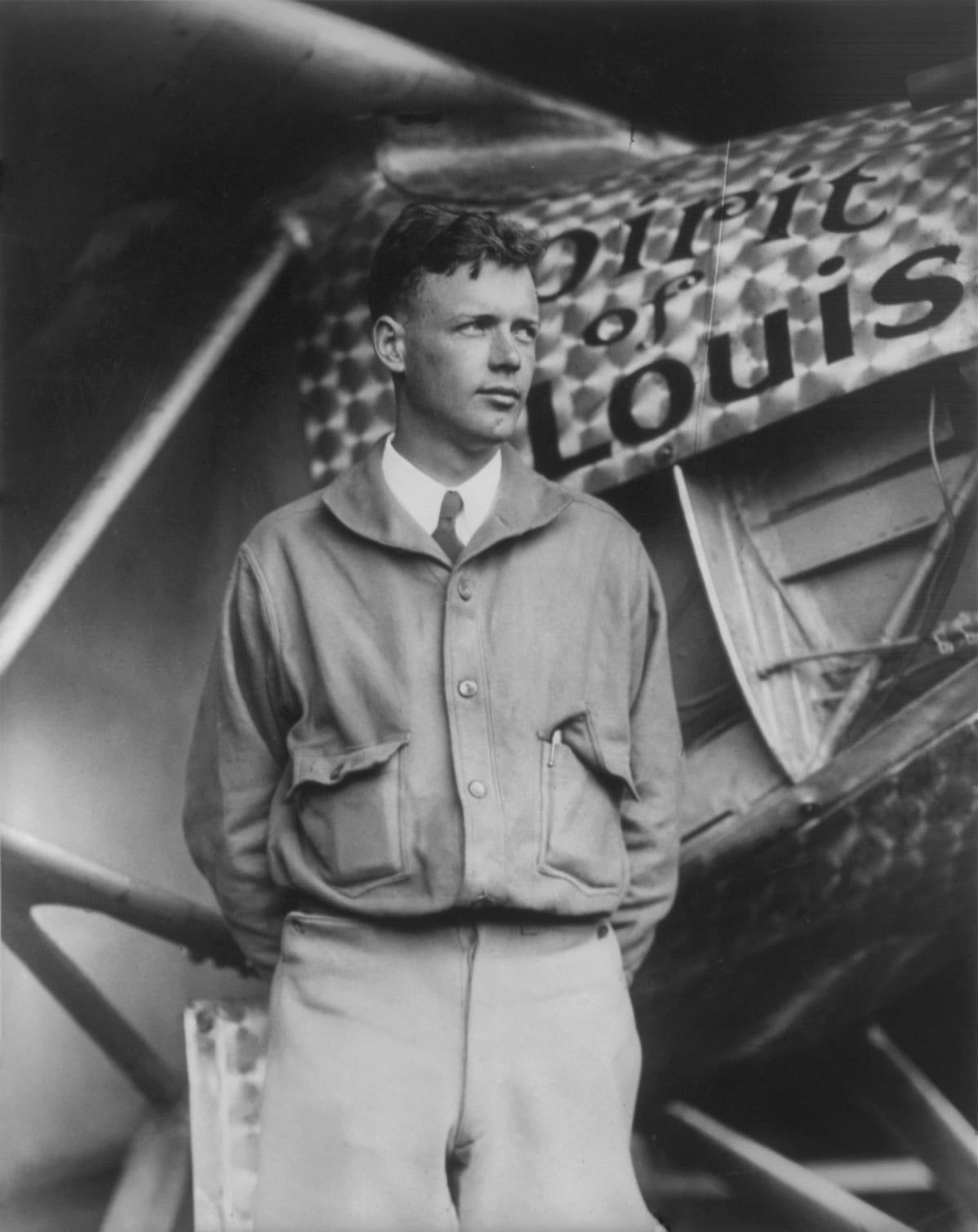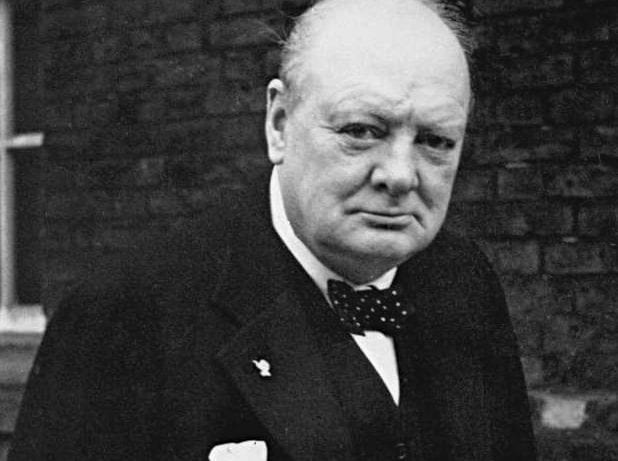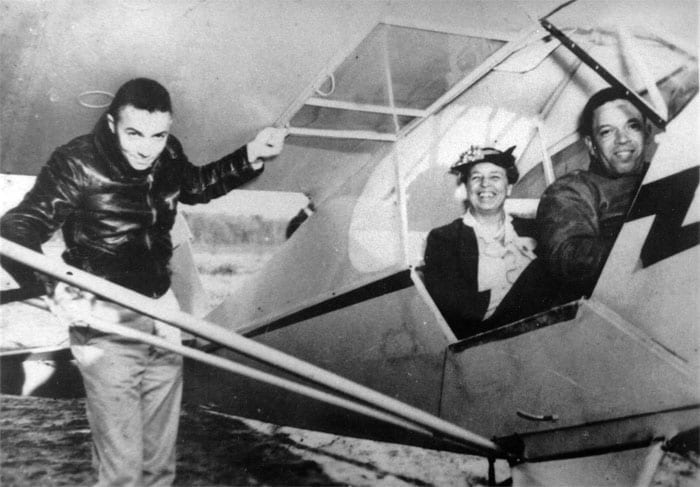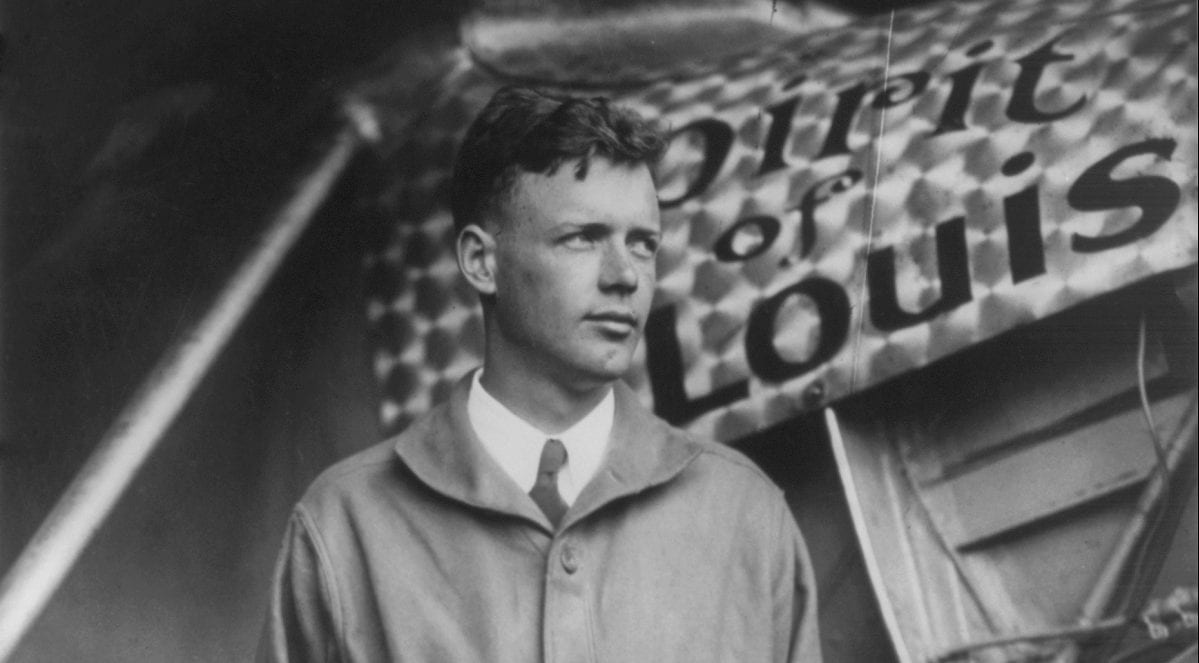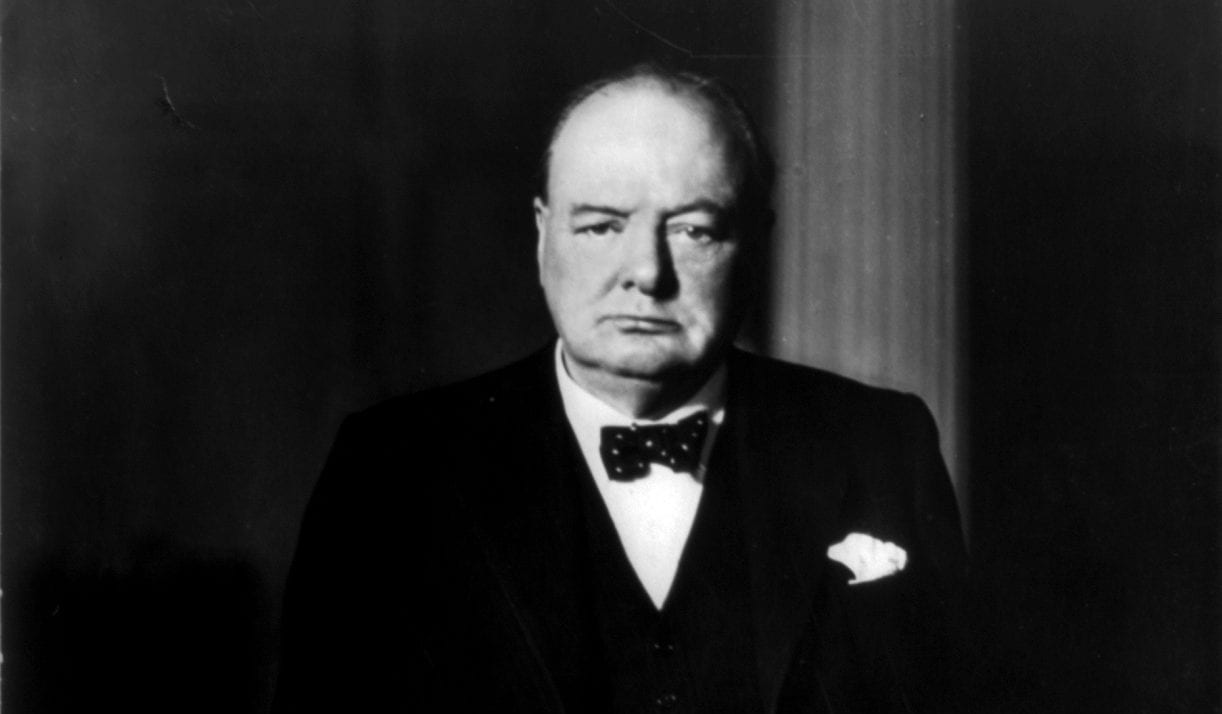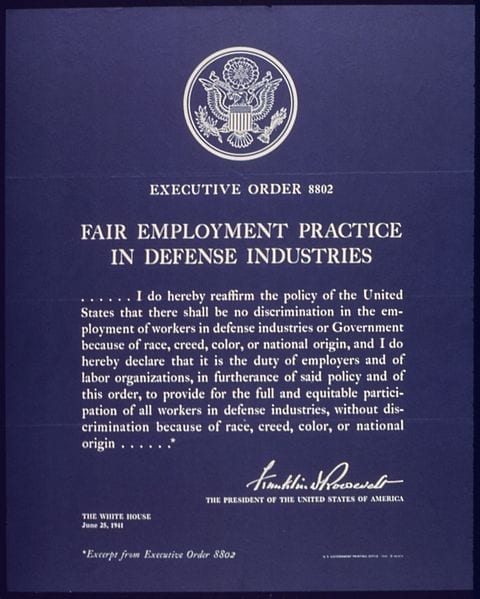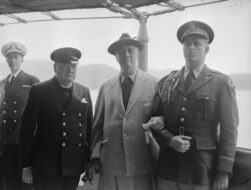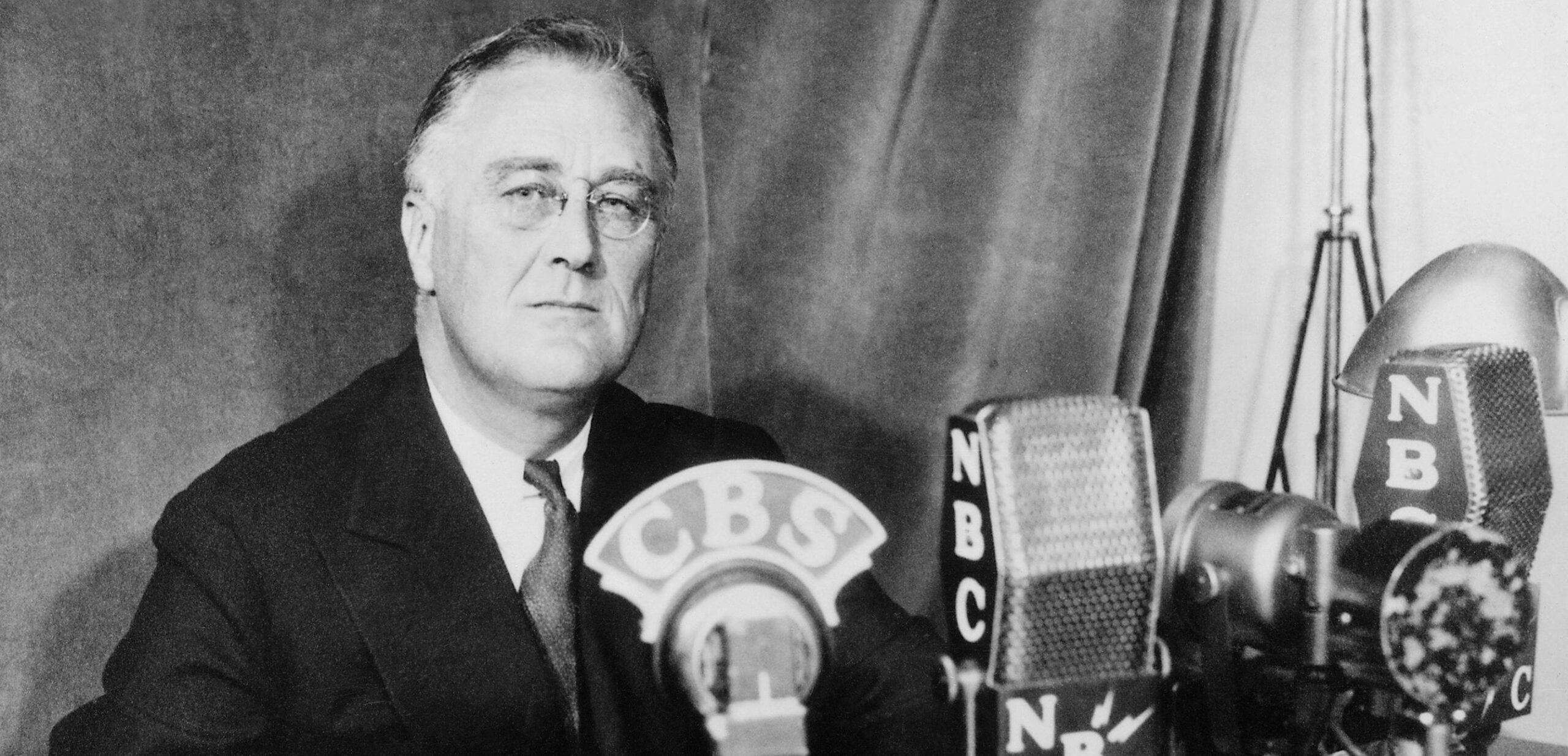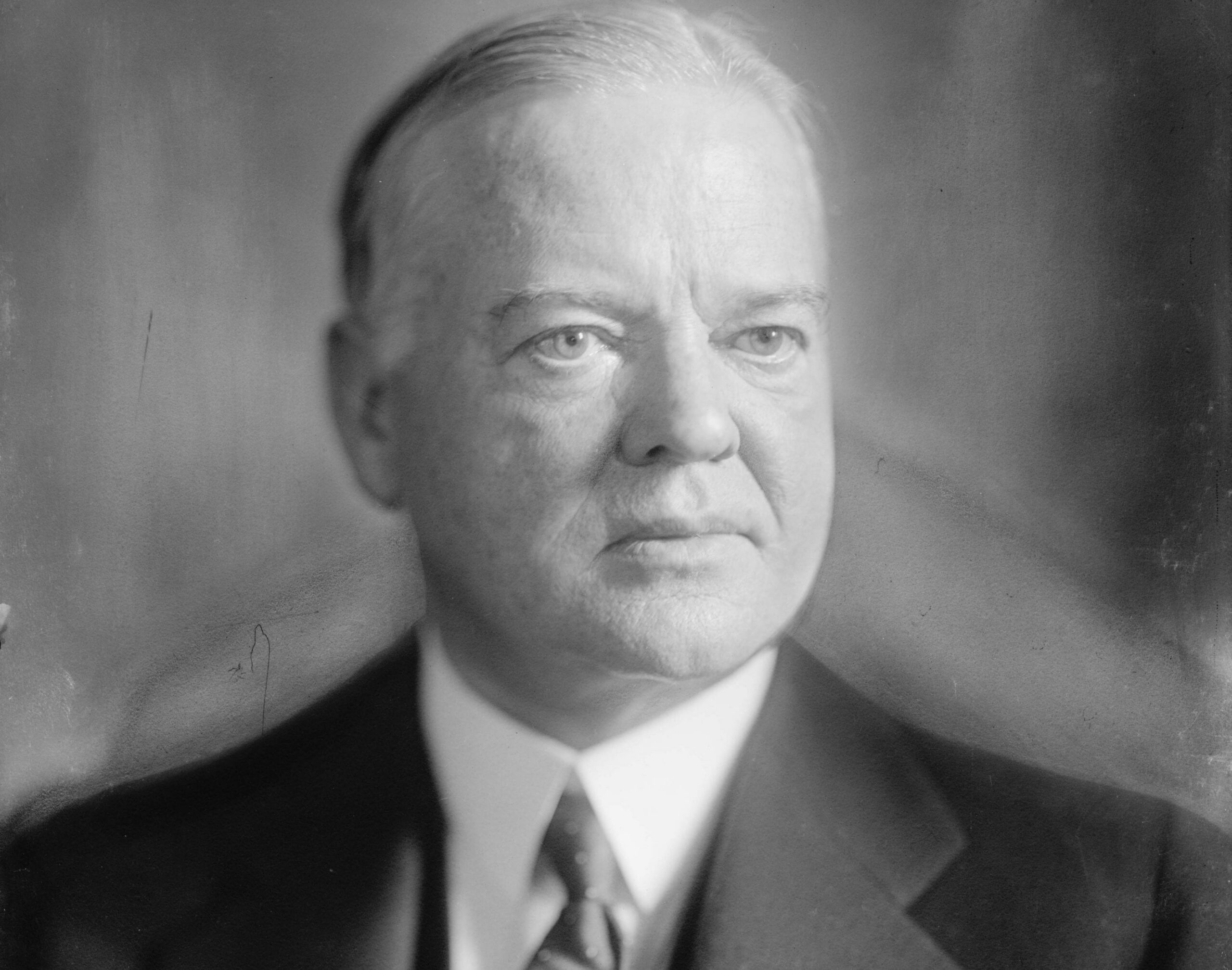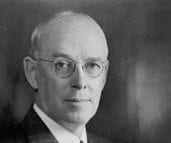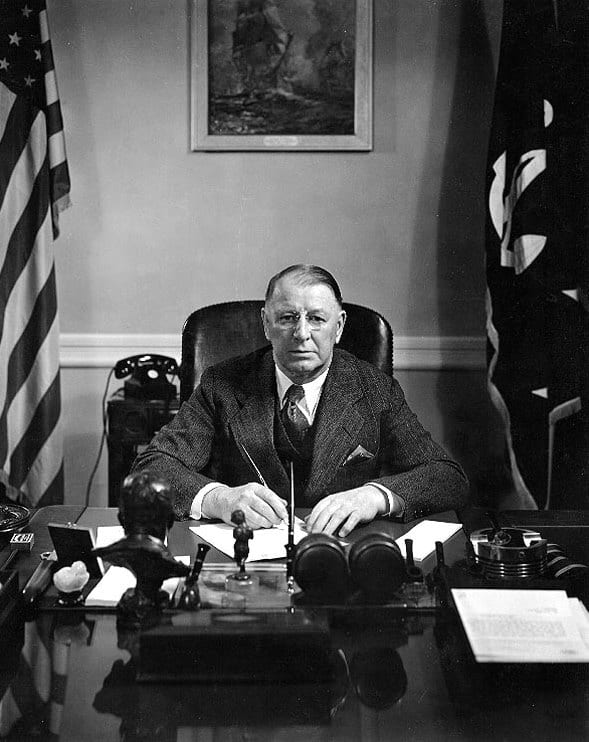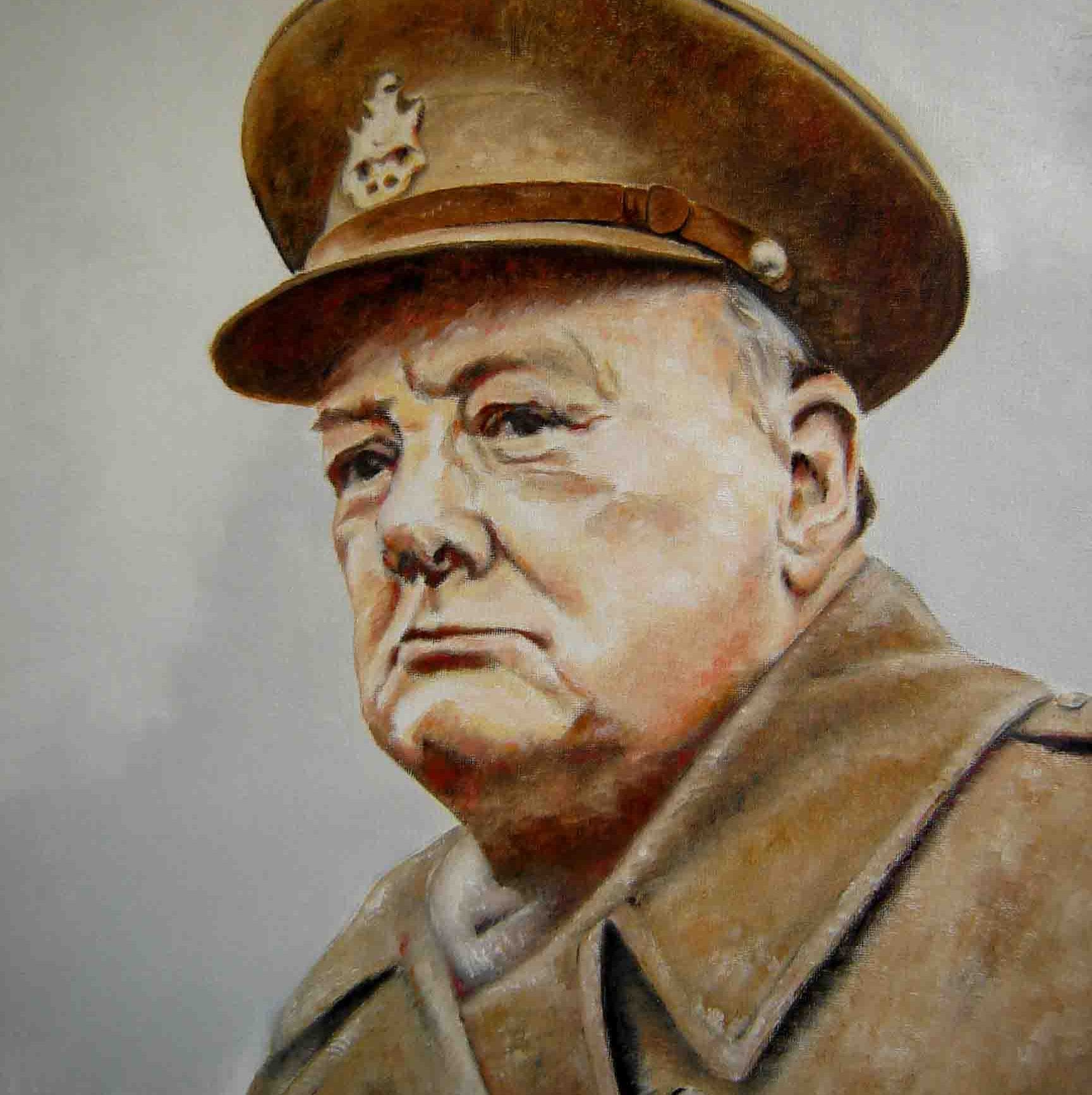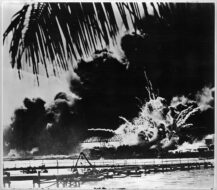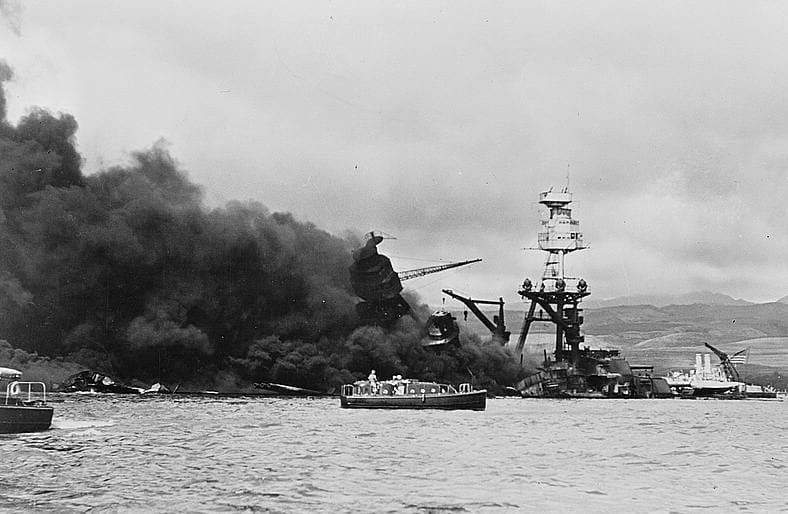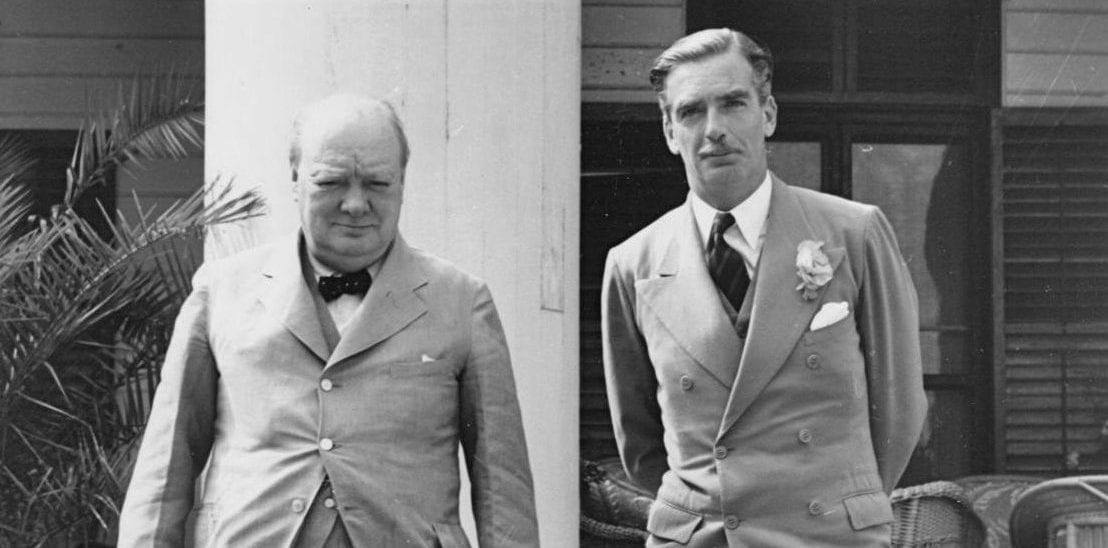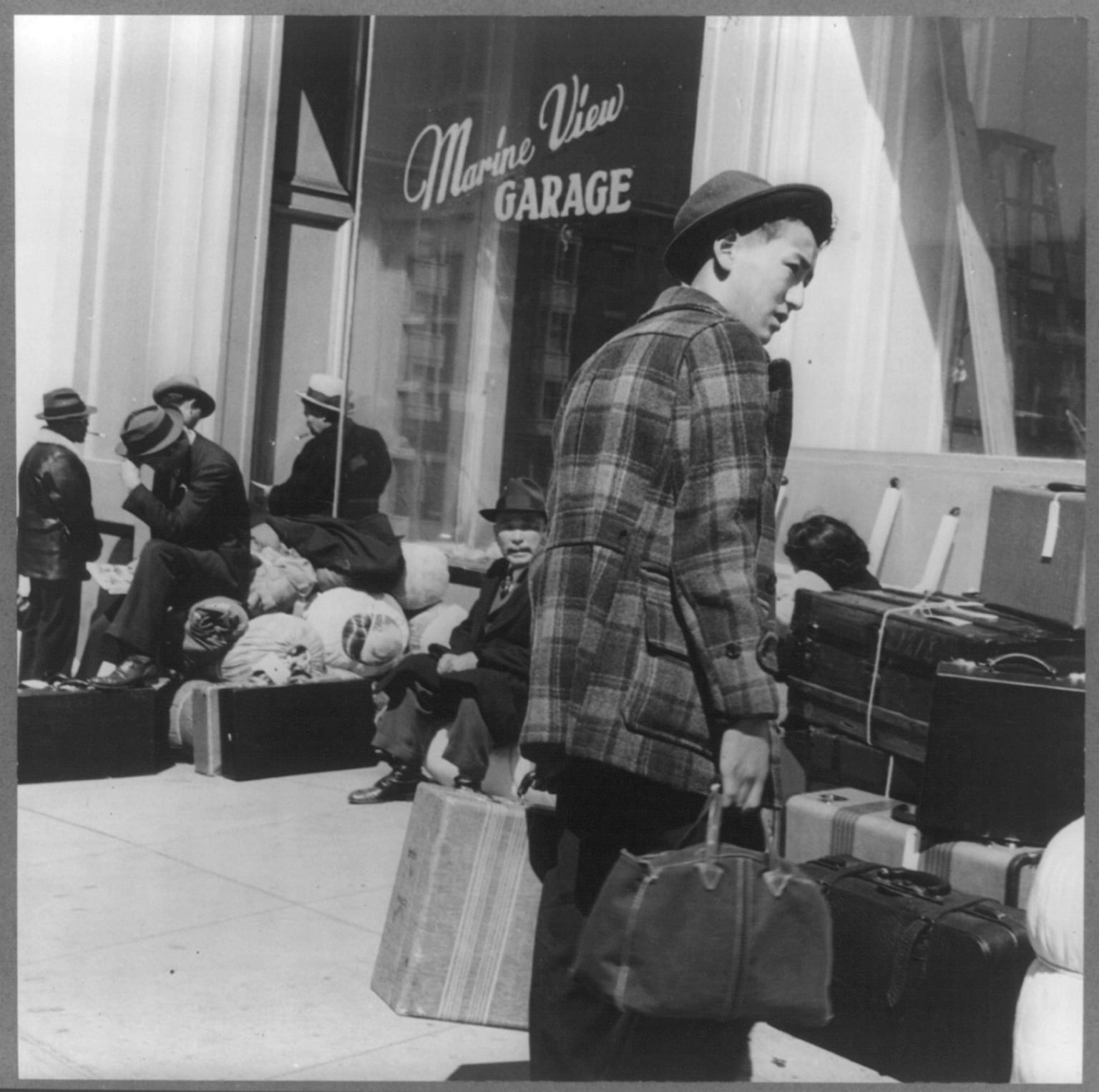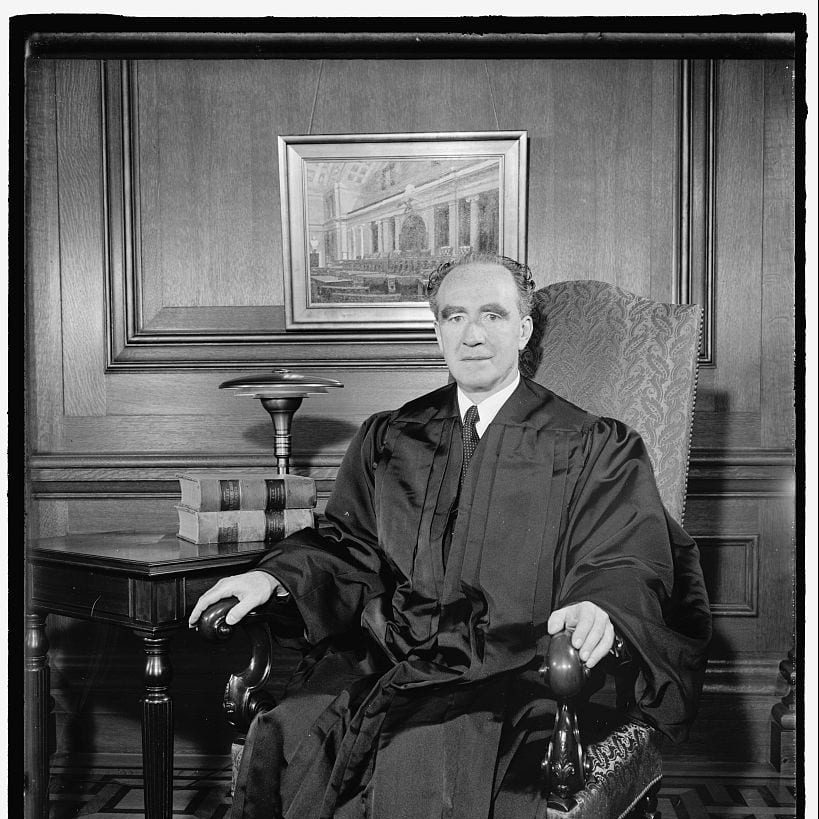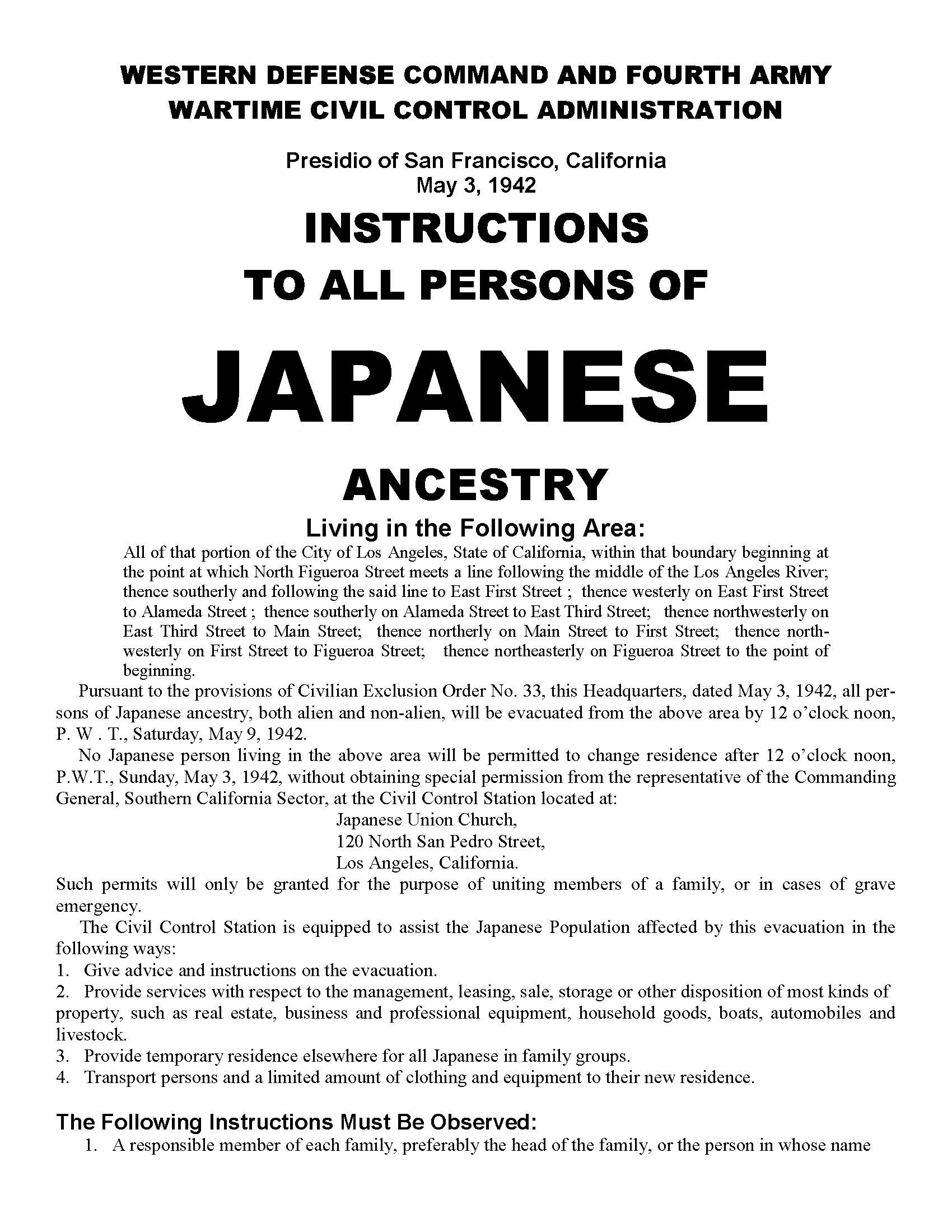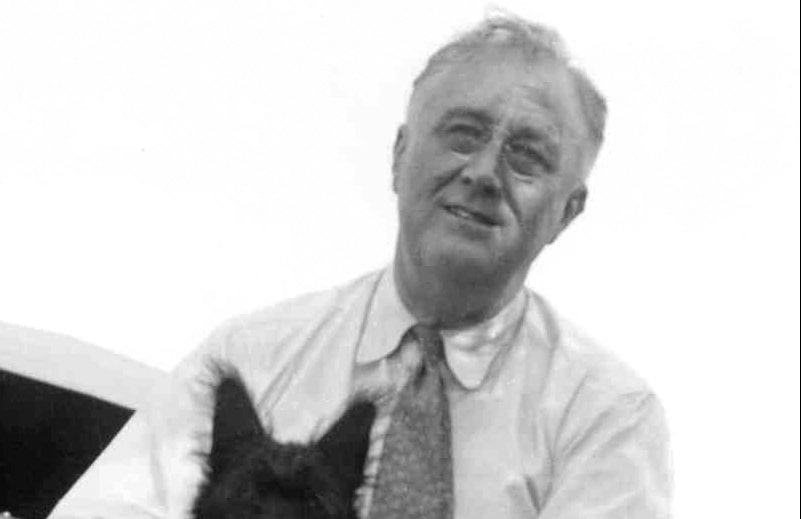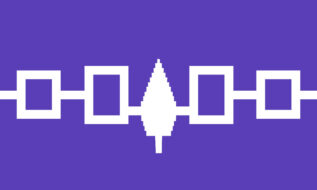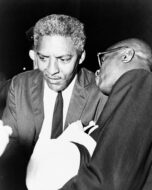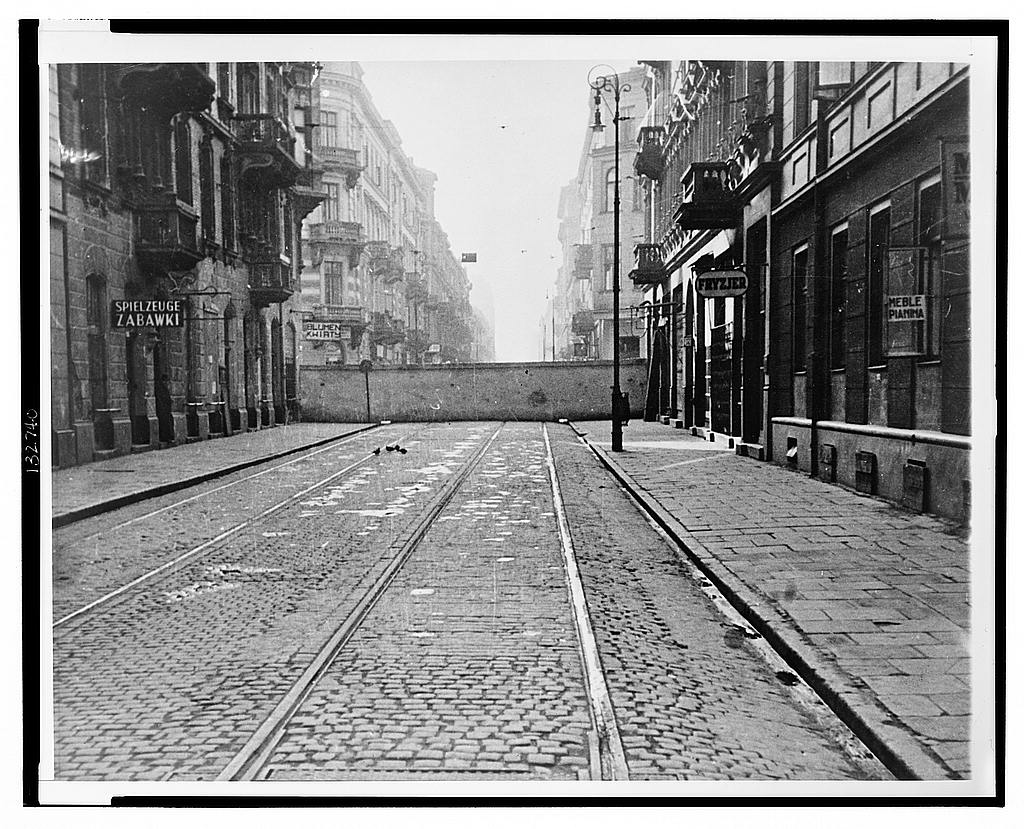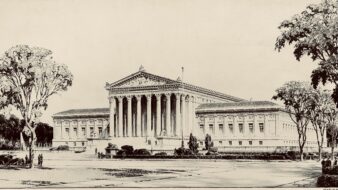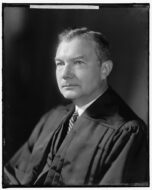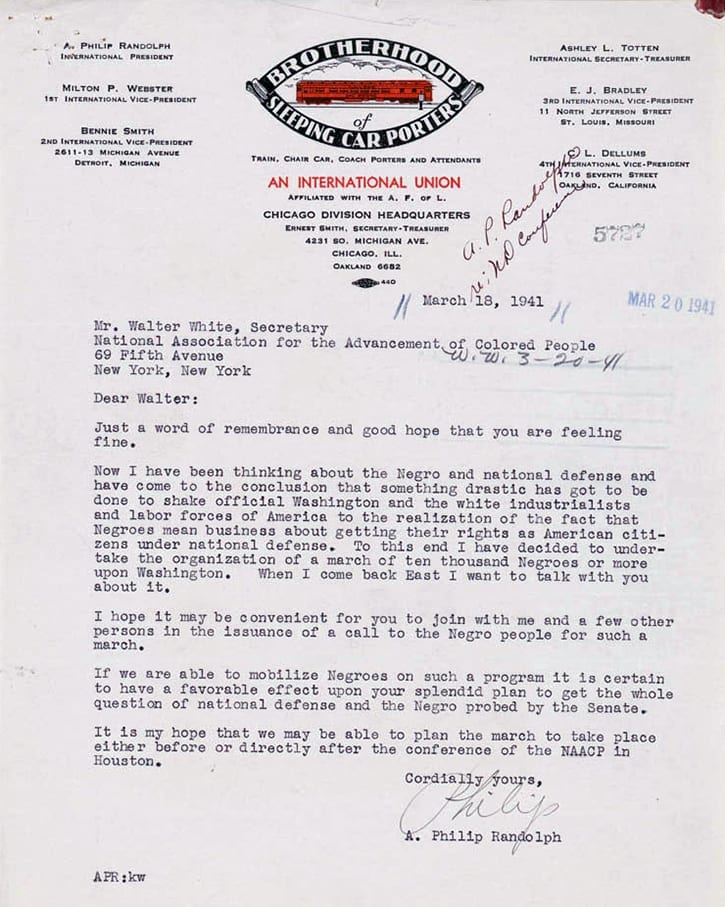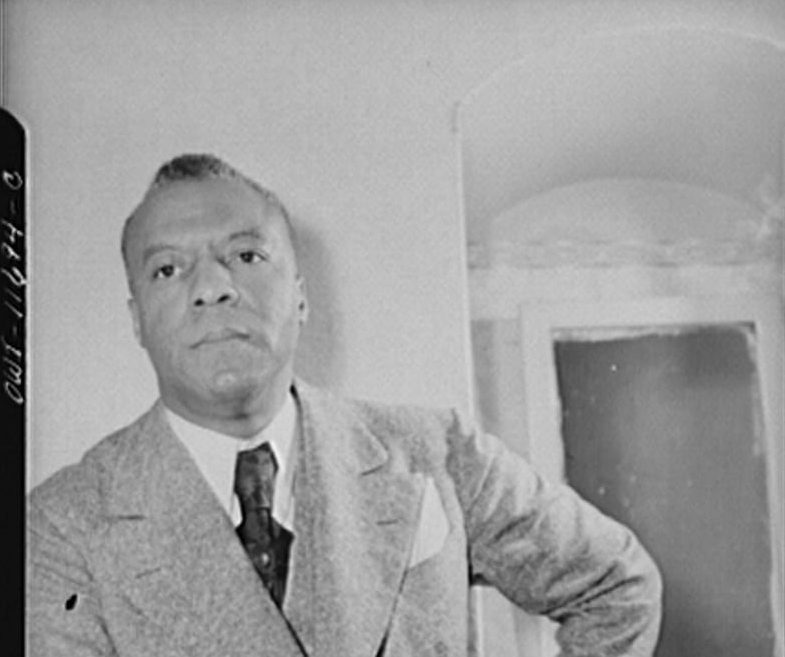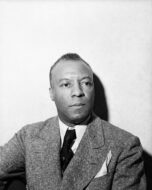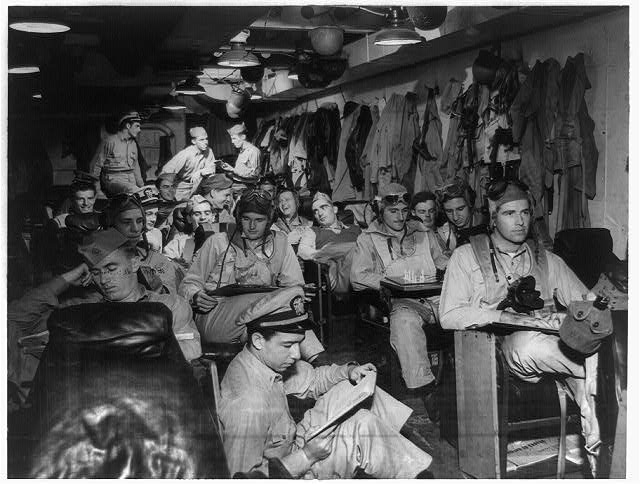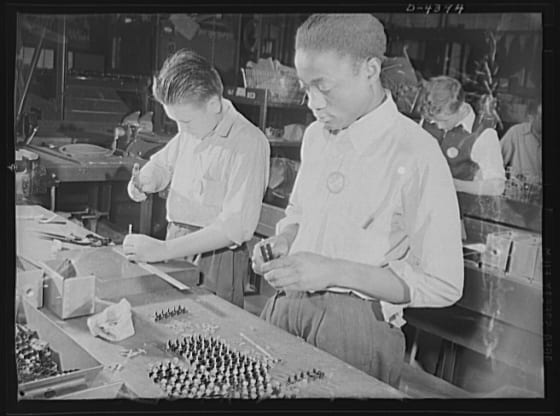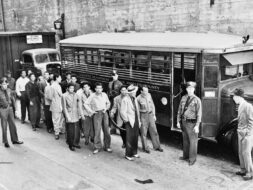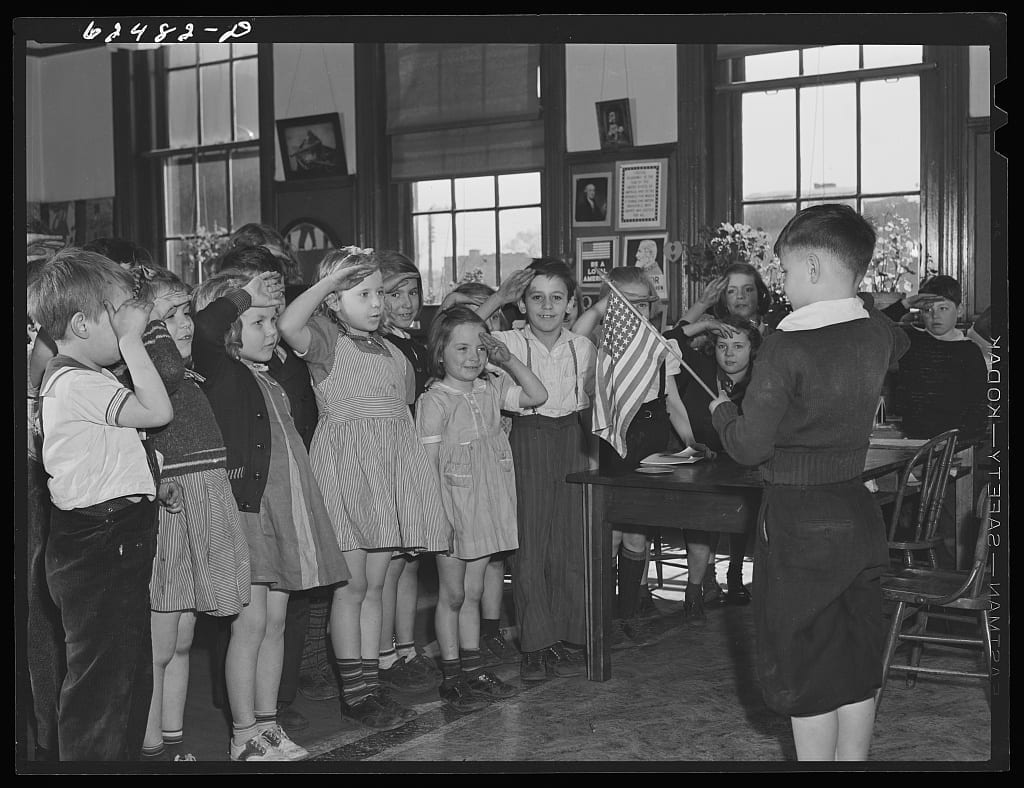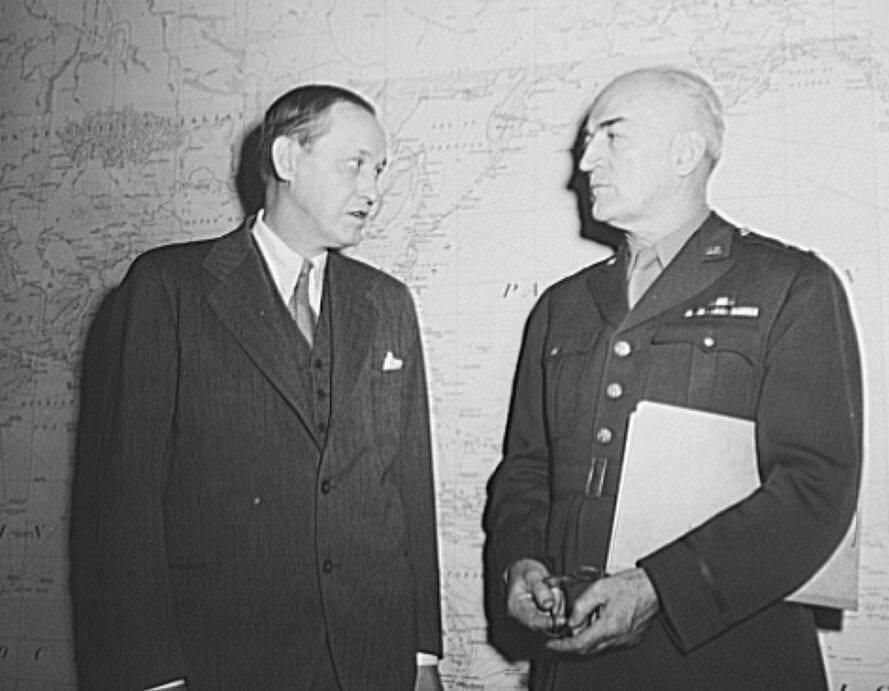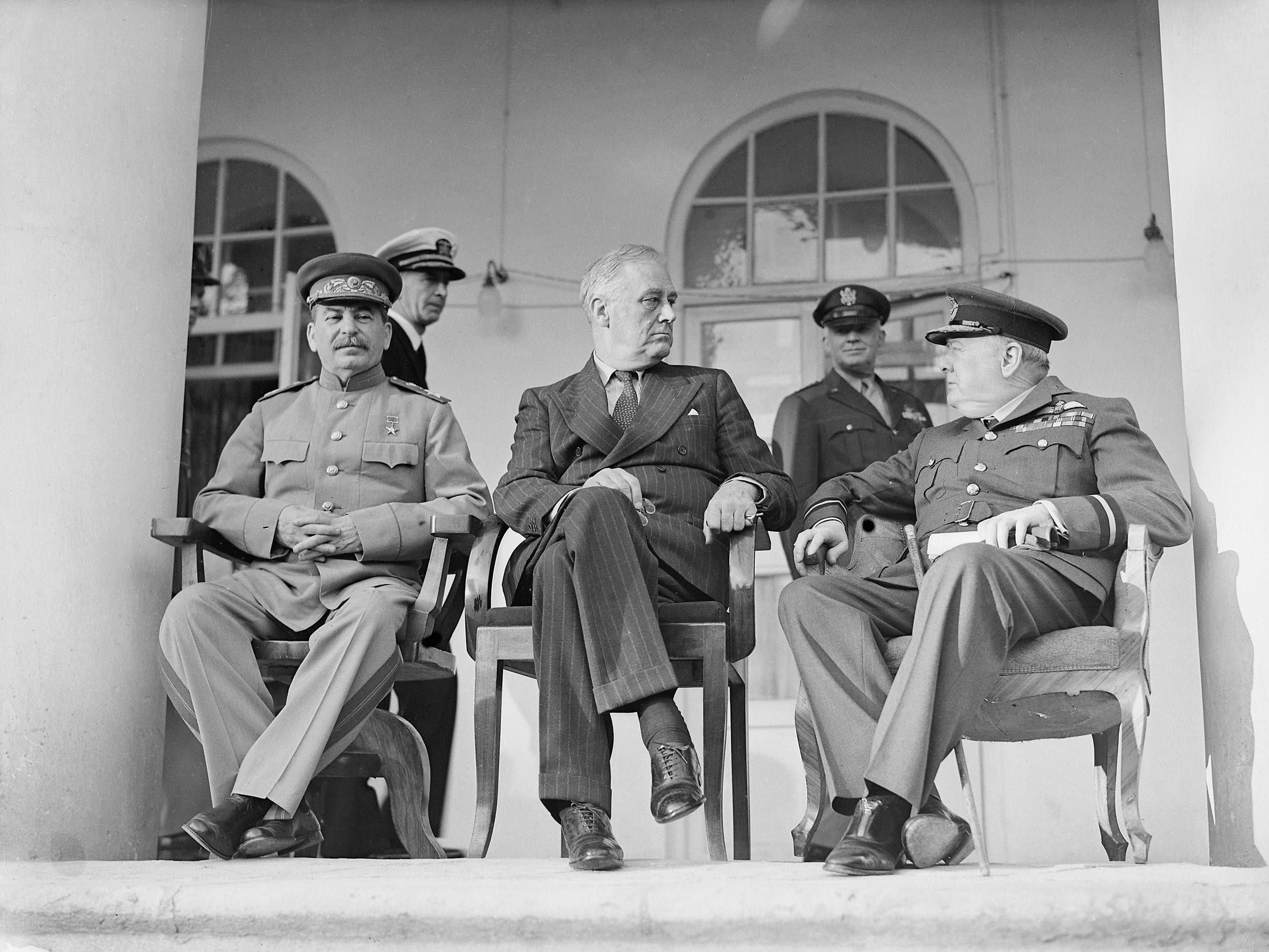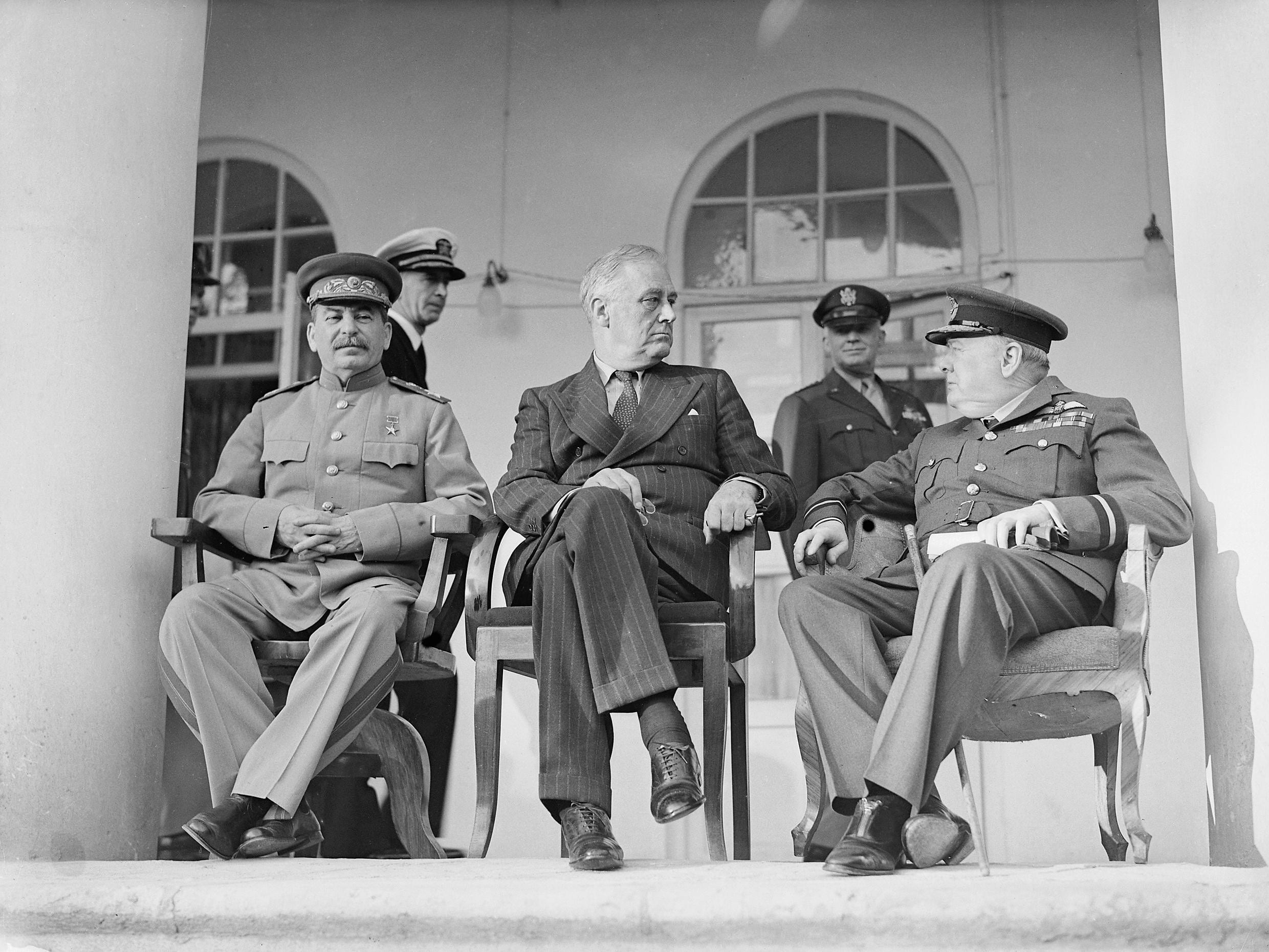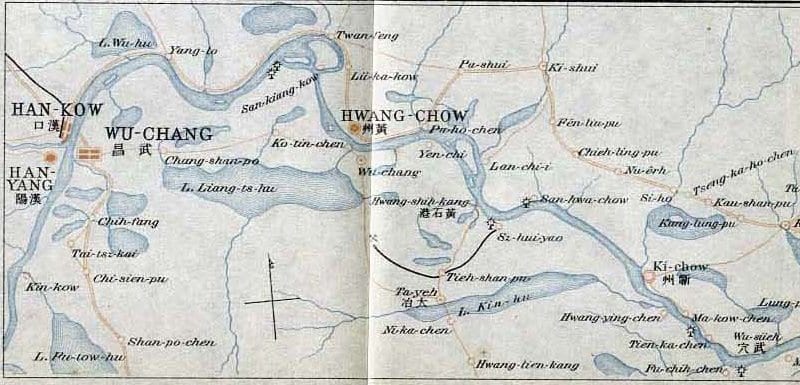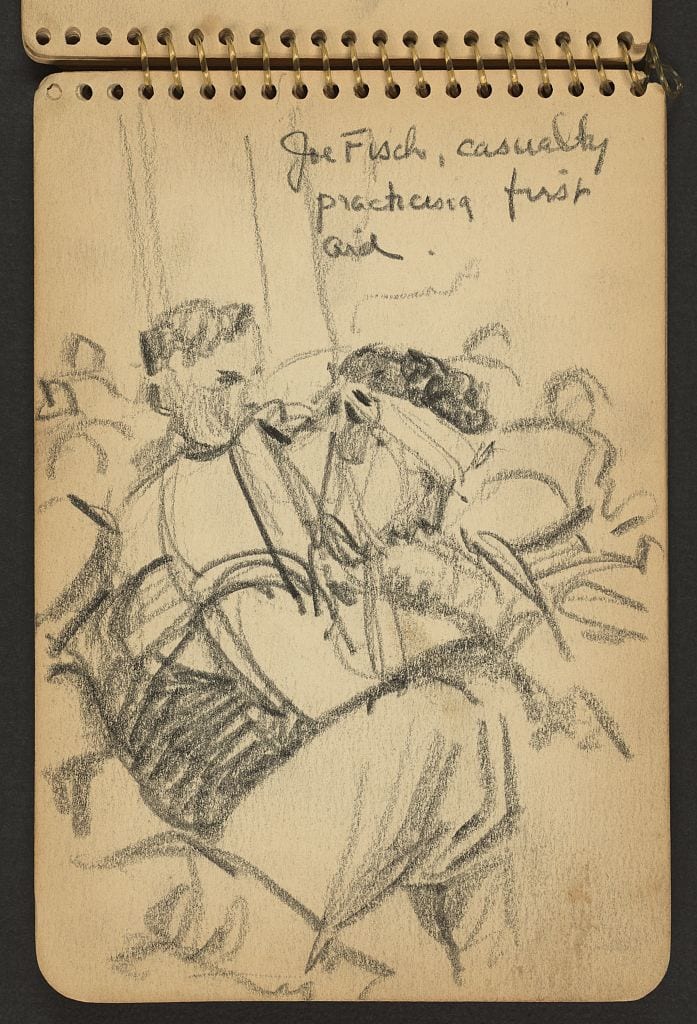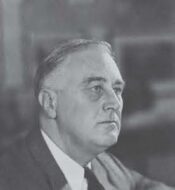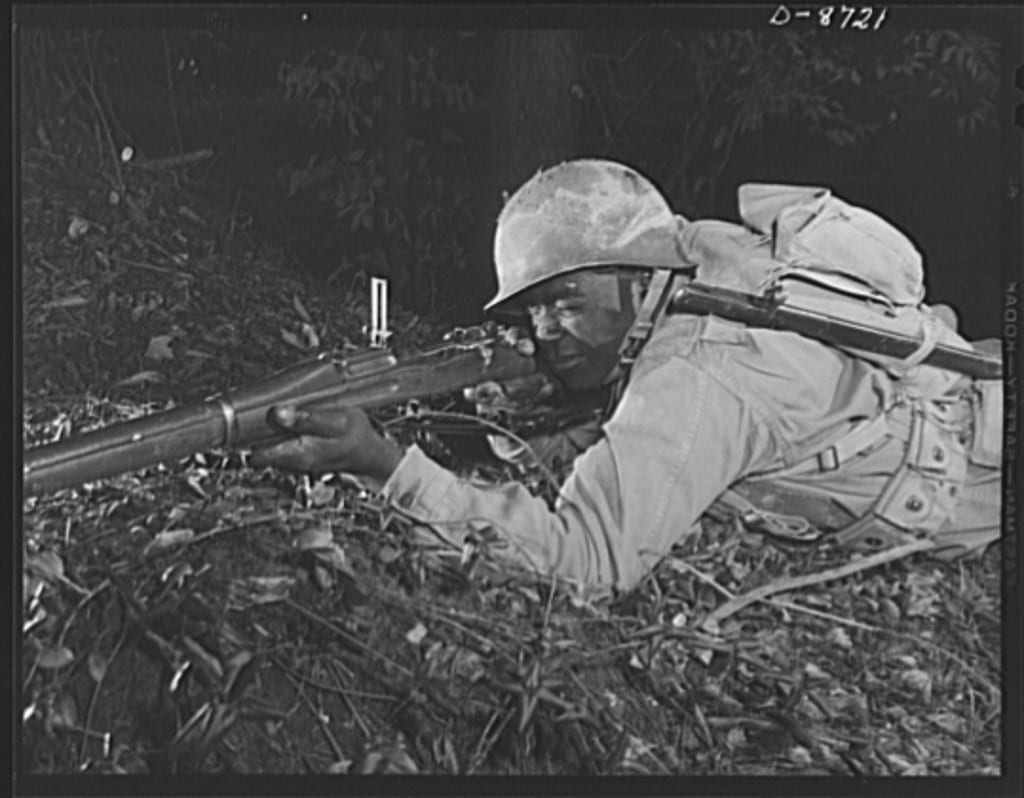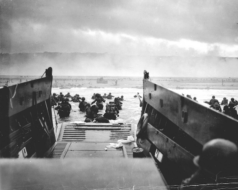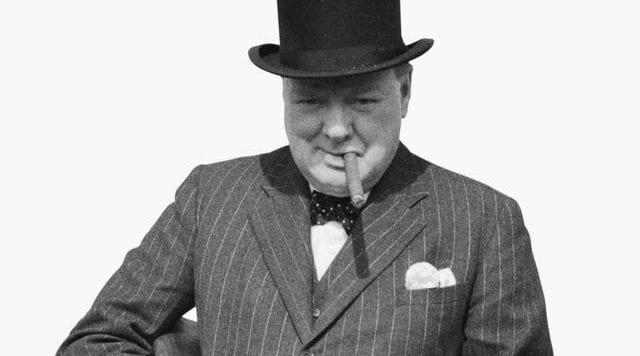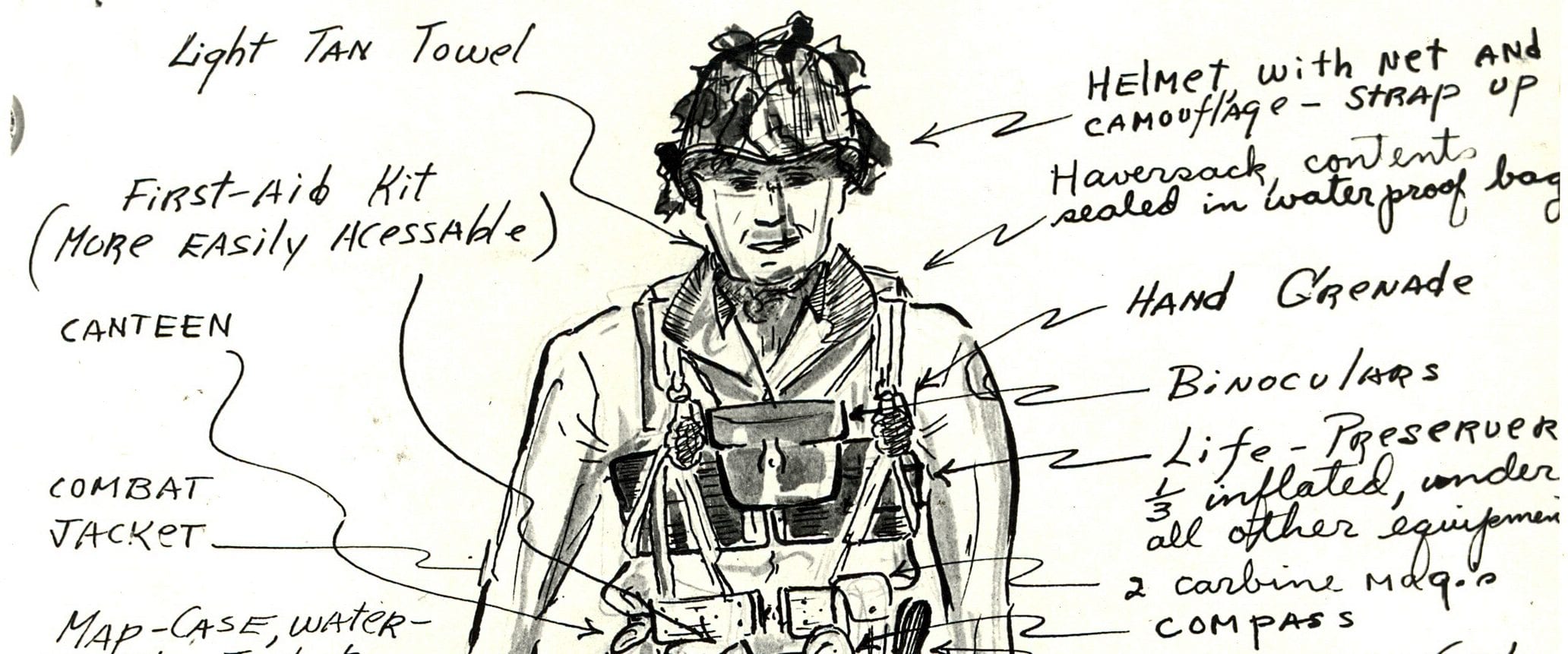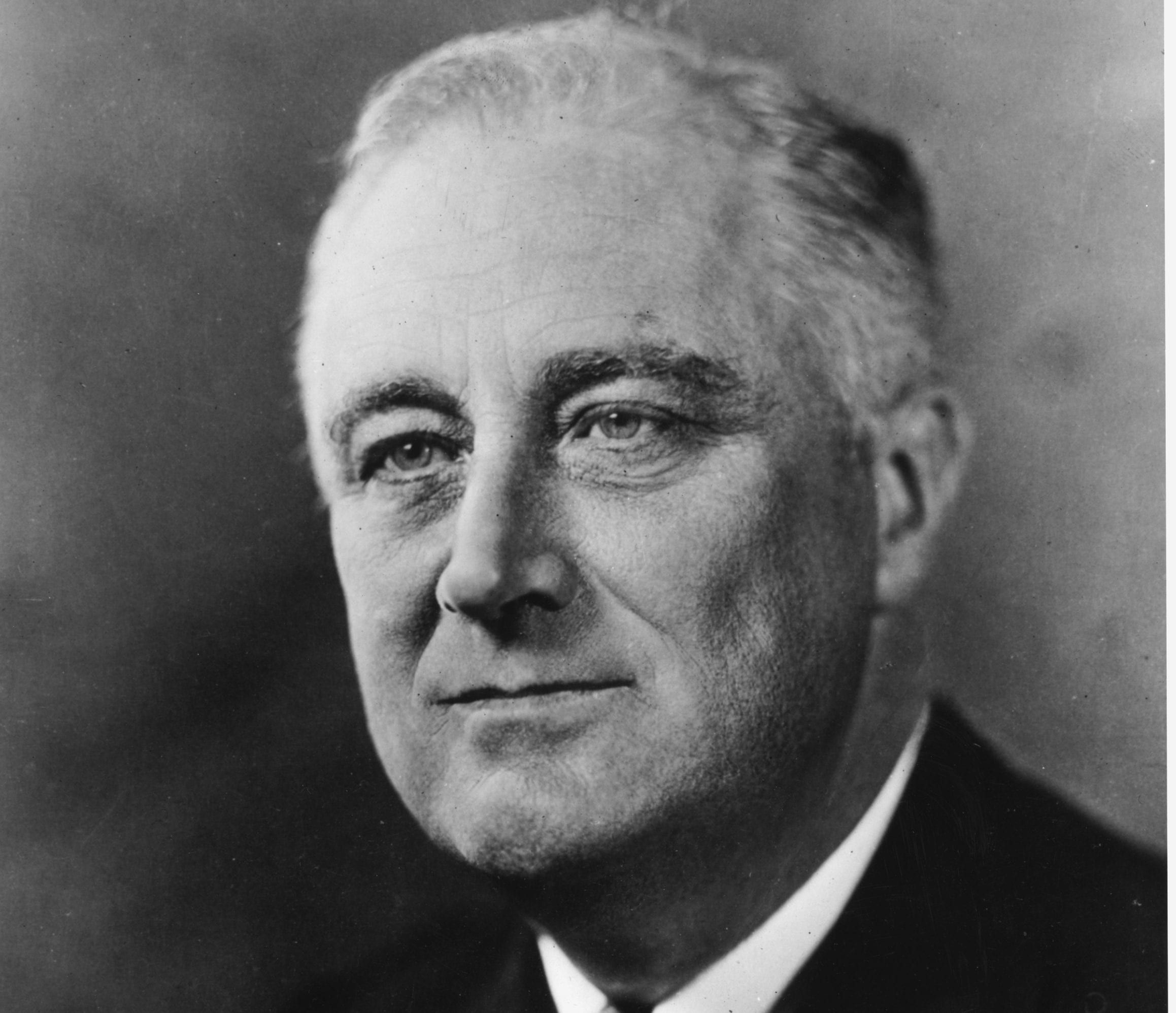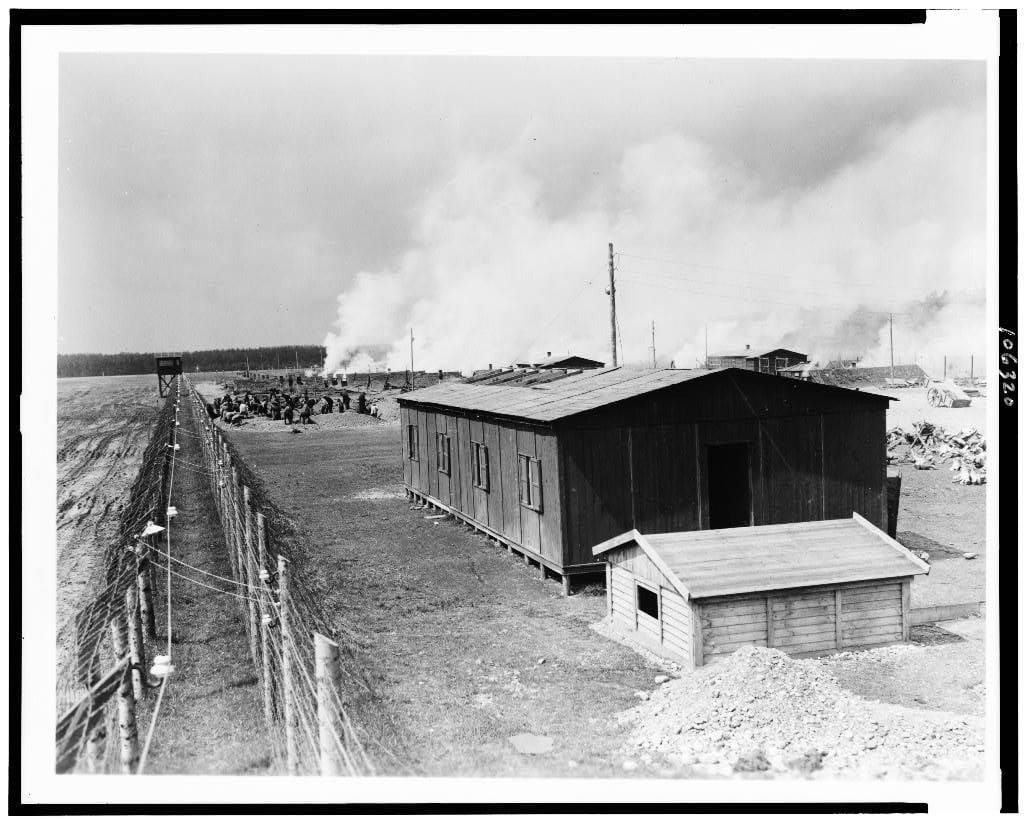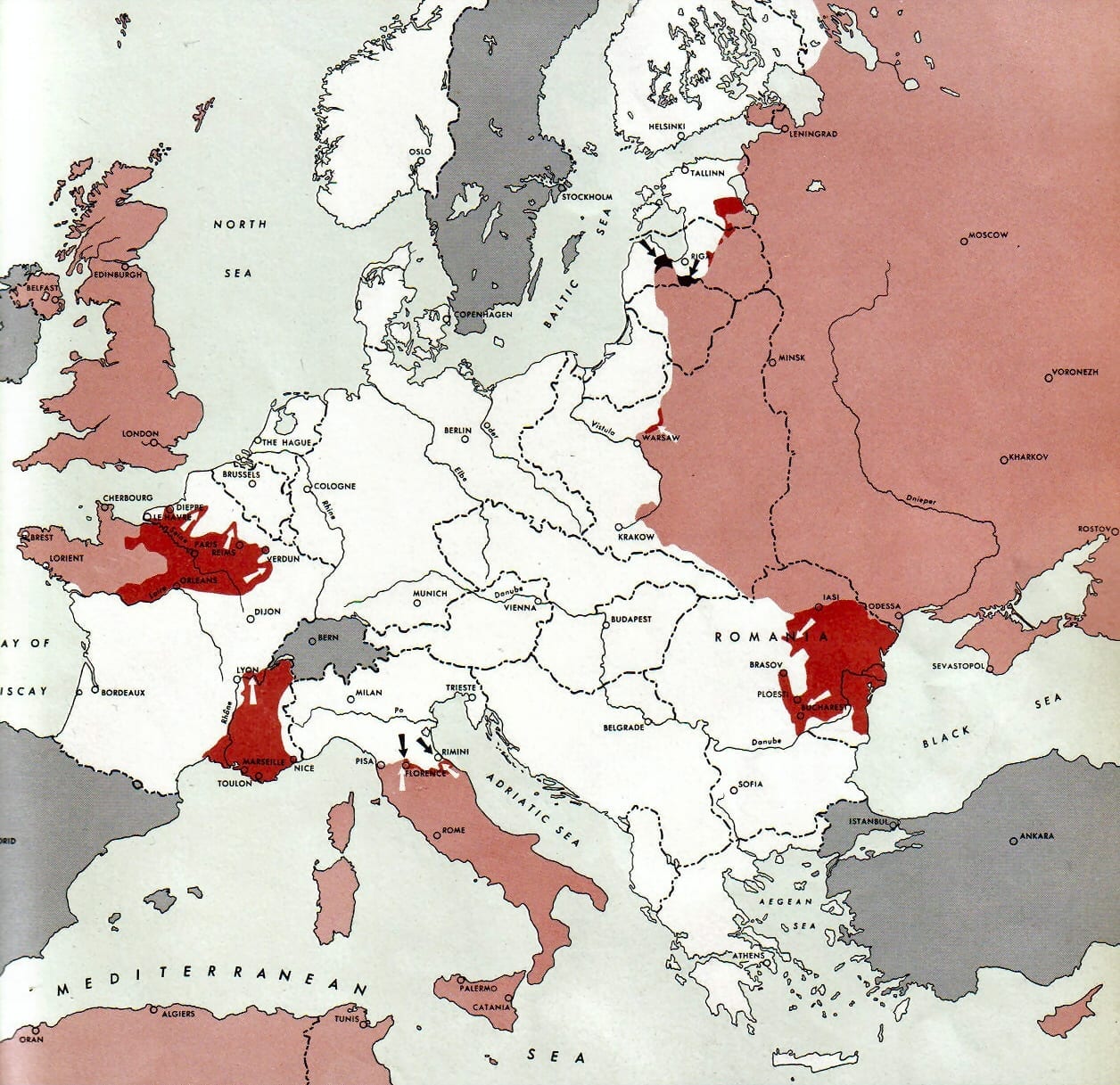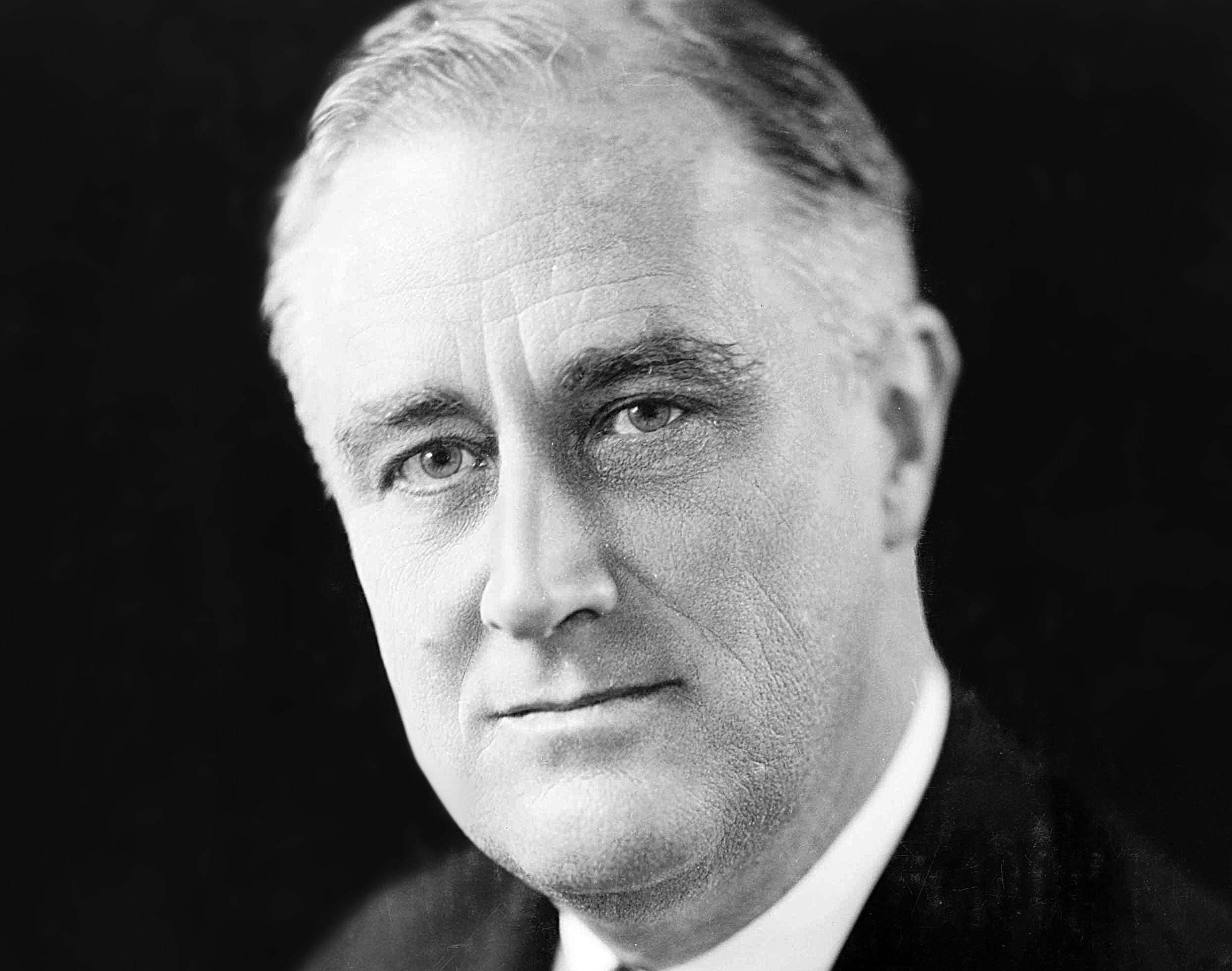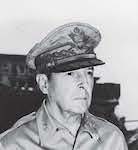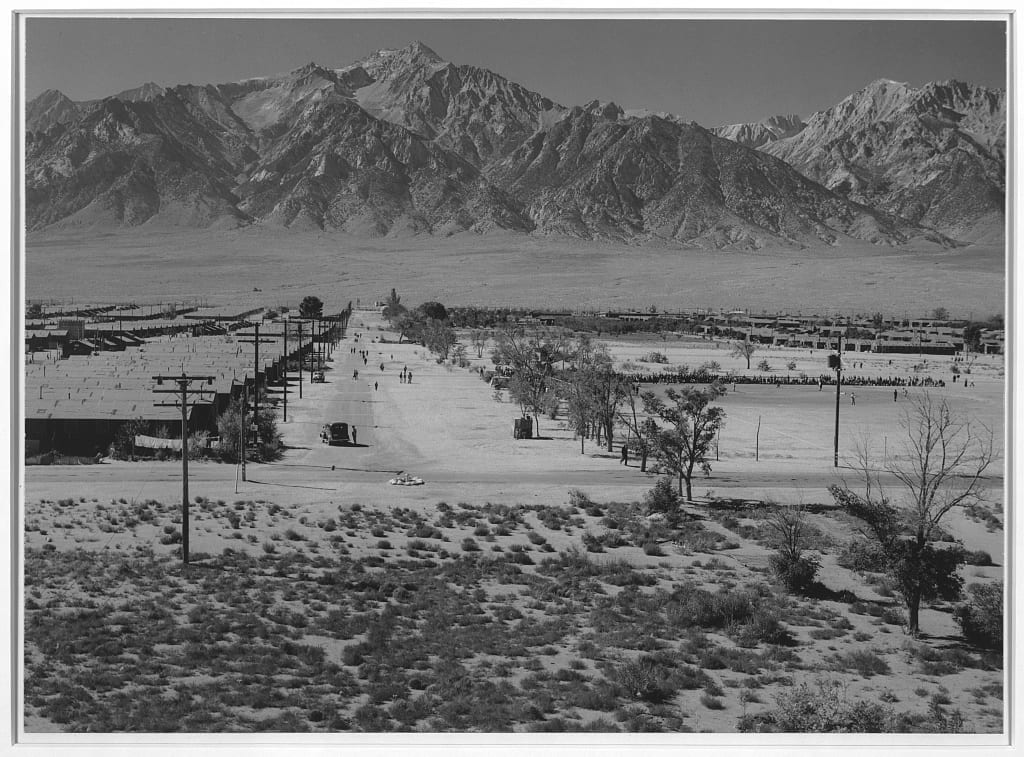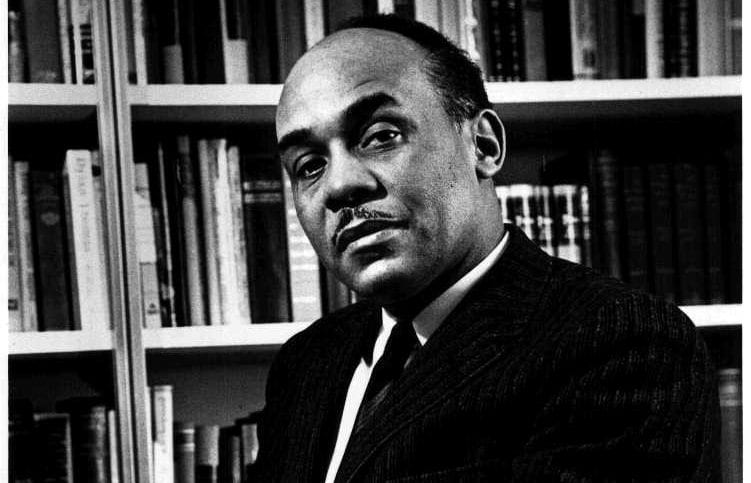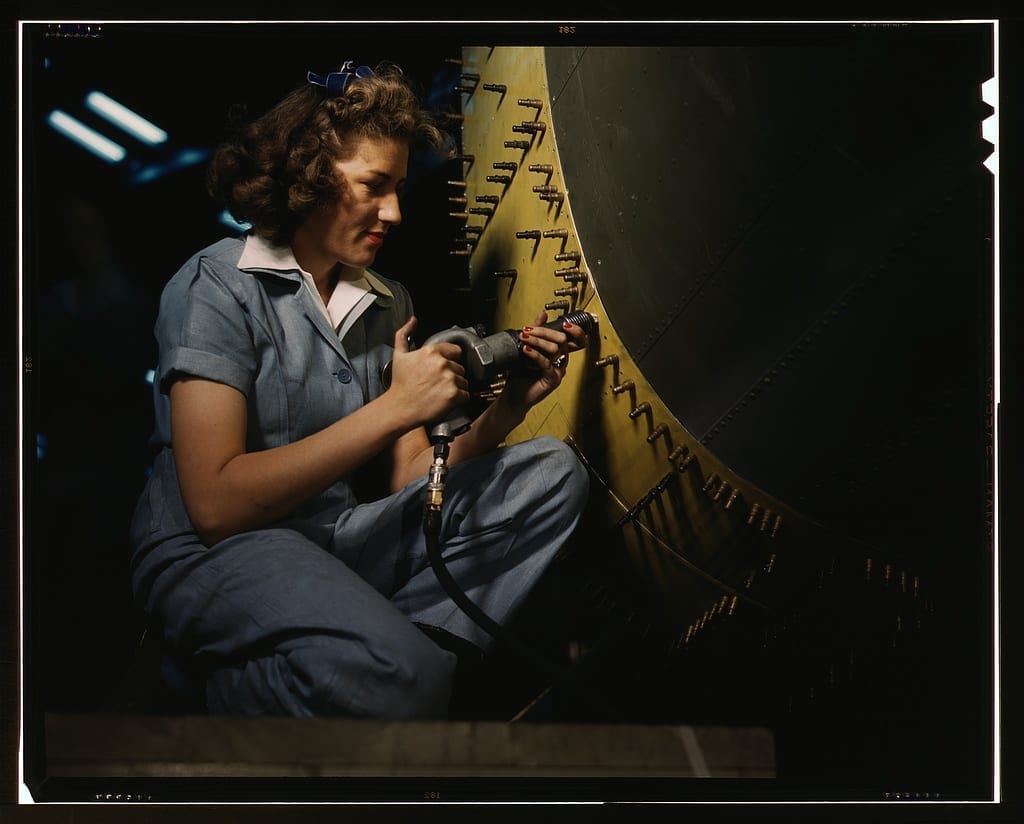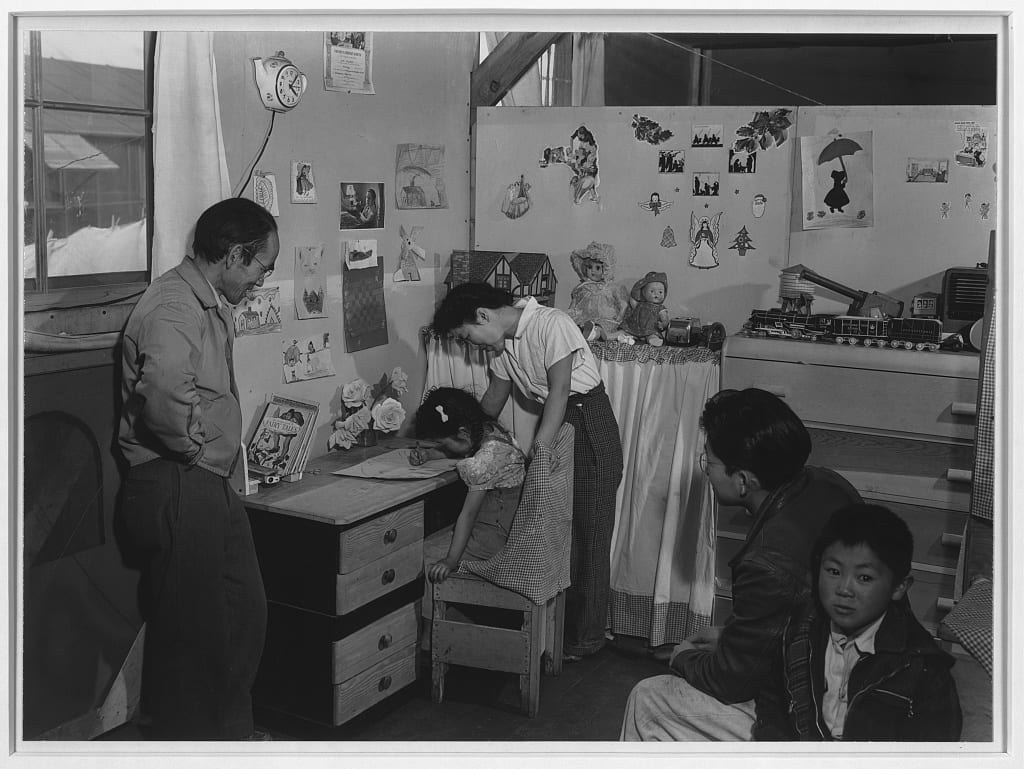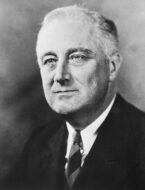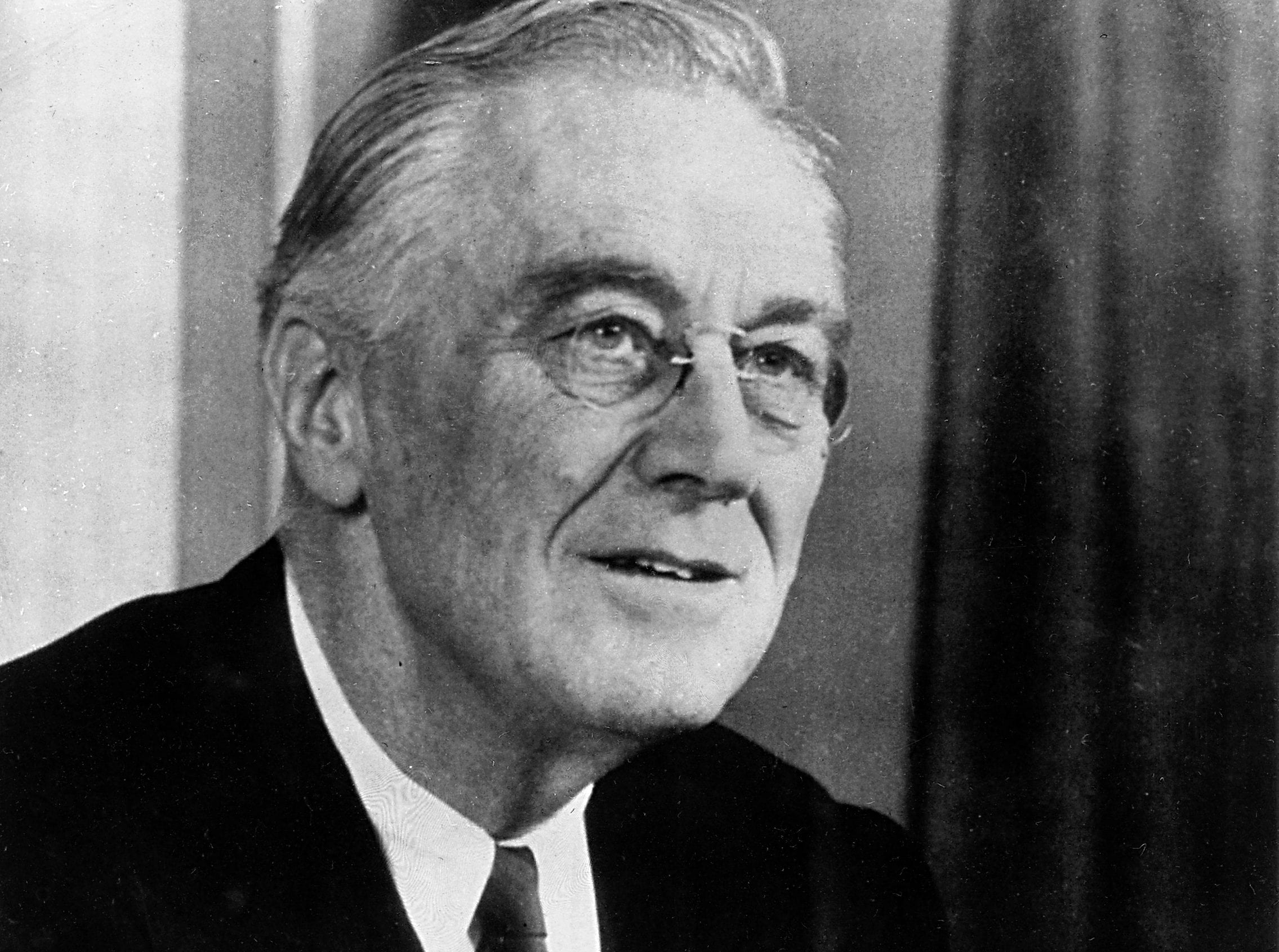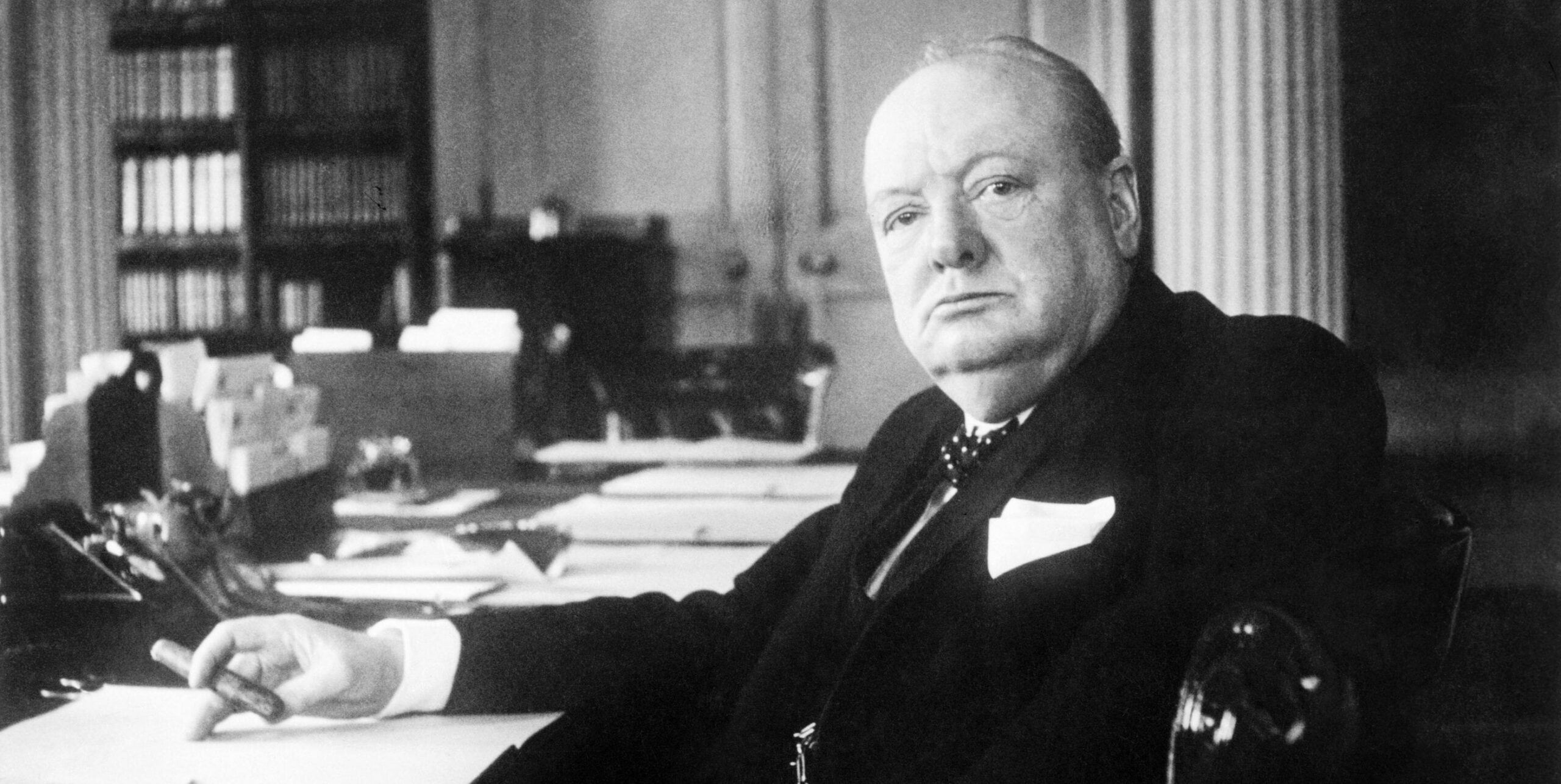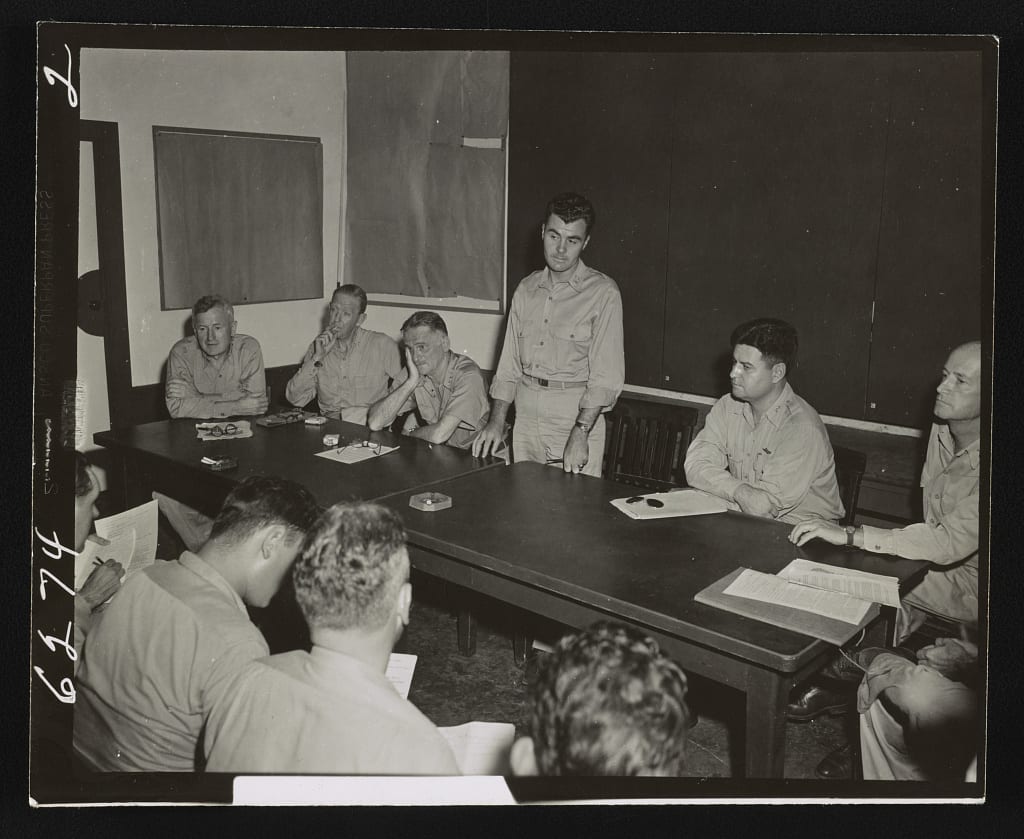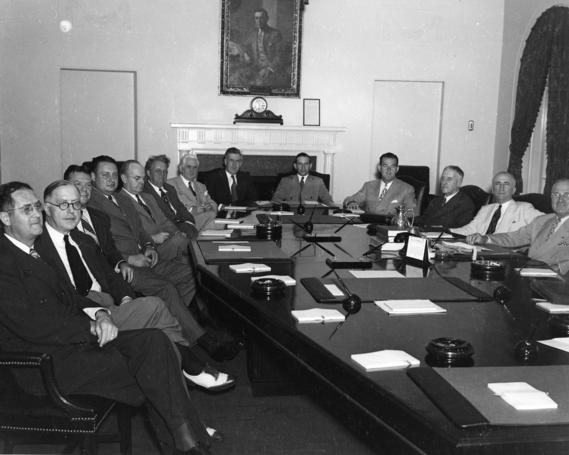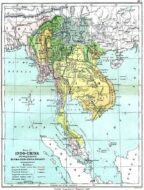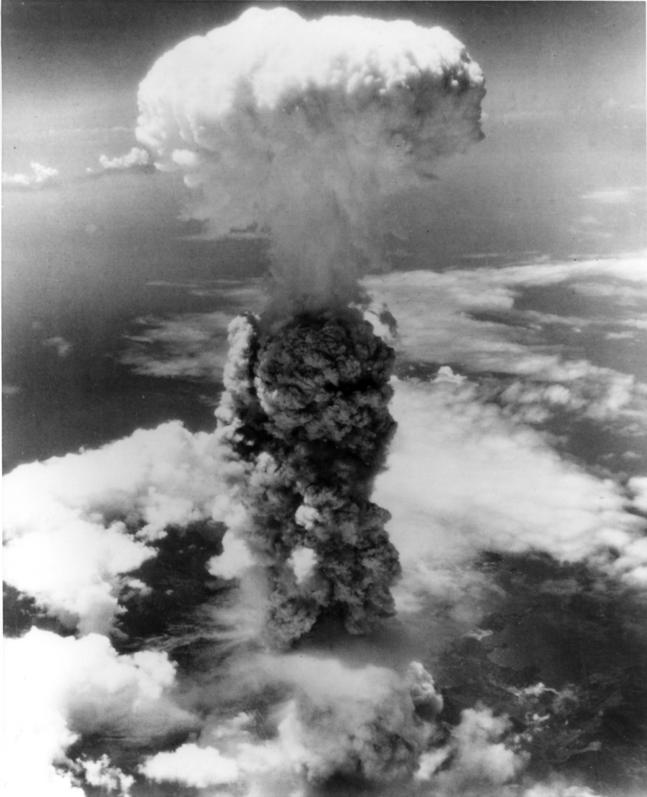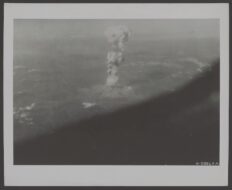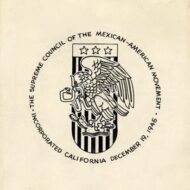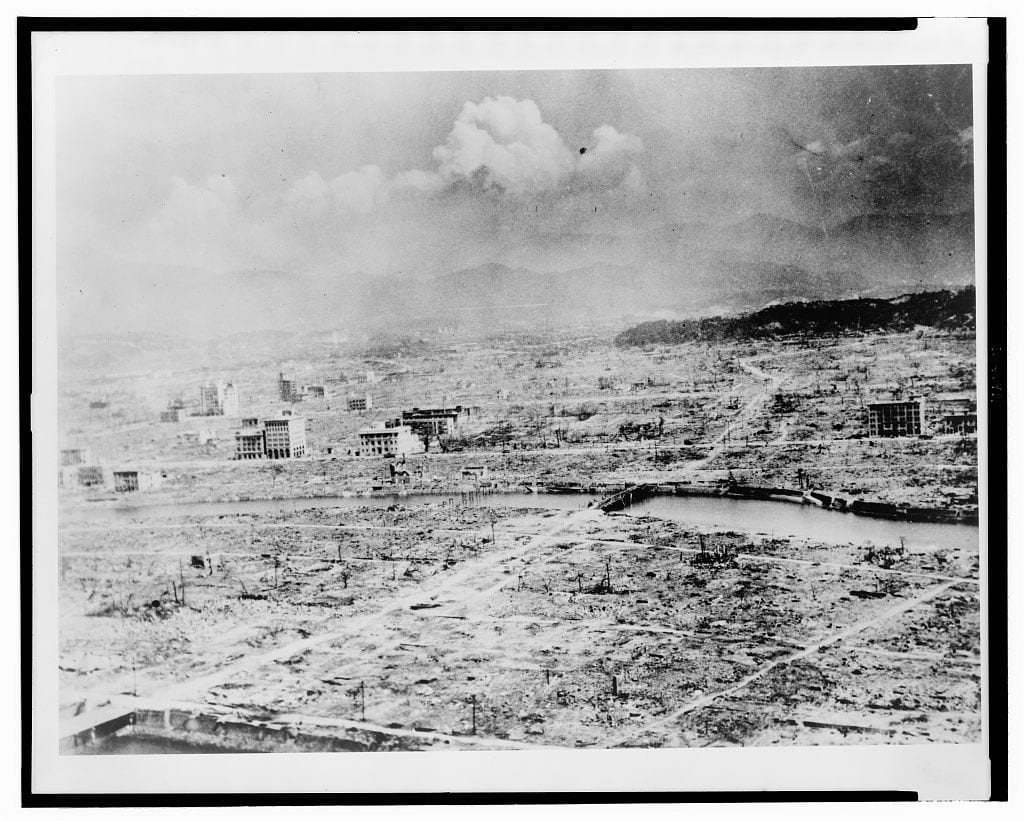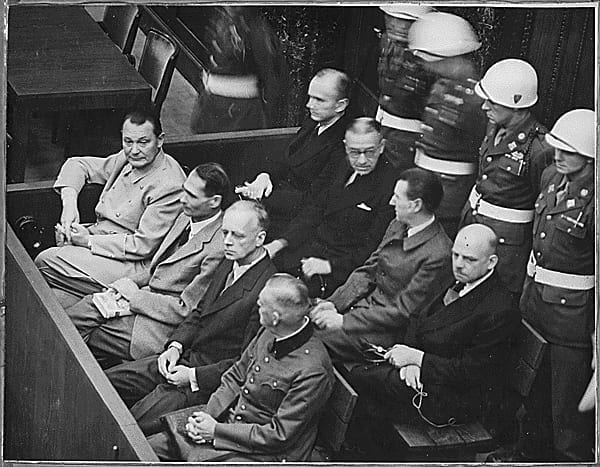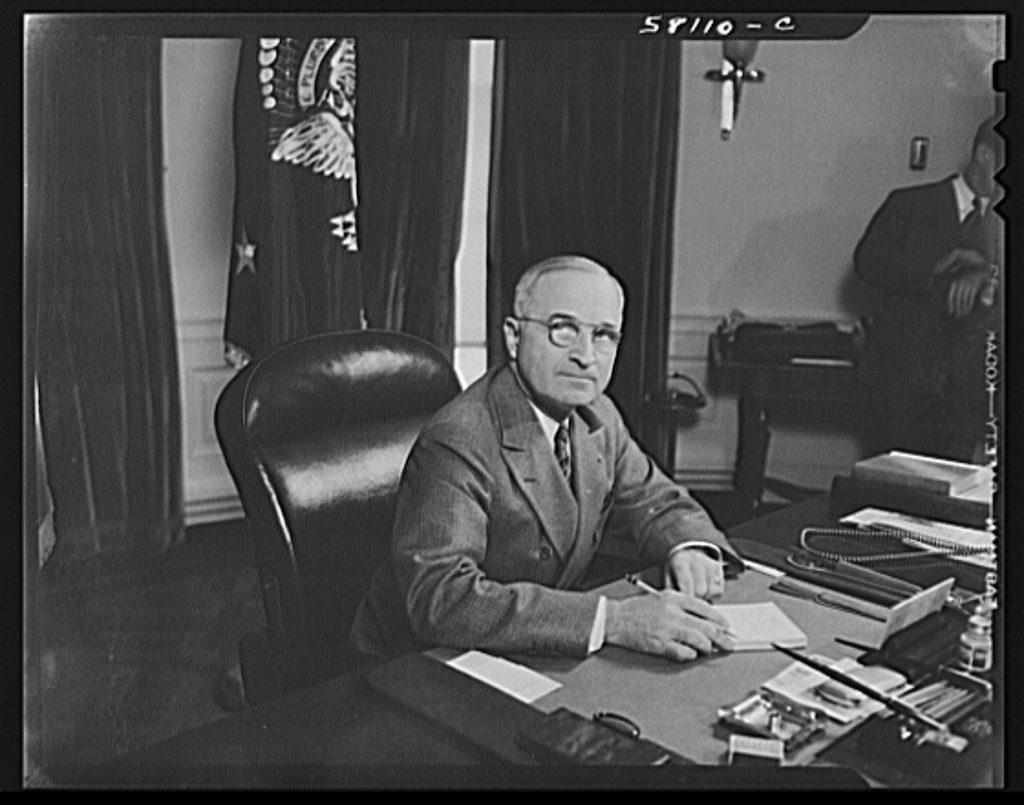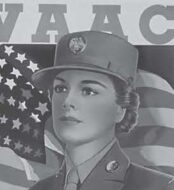
No study questions
No related resources
Introduction
After Germany’s surrender on May 7, 1945, the war continued in the Pacific, as did planning for the invasion of Japan. Allied military leaders believed invasion was the only way to force the unconditional surrender for which Allied policy called (see the Potsdam Proclamation). Intense bombing of Japan (on March 9-10, 1945, for example, bombs leveled nearly 16 square miles of Tokyo and killed 90,000 Japanese) had not moved Japan to surrender. Continued fighting in the Pacific (Iwo Jima, February-March, 1945; Okinawa, April-June 1945; and ongoing fighting in the Philippines) led to mounting American casualties. The experience of the invasion of Normandy June 4, 1944 also informed decision making about the use of the atomic bomb.
In May of 1945, Secretary of War Stimson set up a committee, the Interim Committee, to consider issues arising from the development of usable nuclear energy. The Interim Committee was chaired by Brigadier General Leslie Groves and J. Robert Oppenheimer, the two who led the Manhattan Project that developed the atomic bomb. Among other things, this committee considered whether and how the atomic bomb should be used. A sub-committee consisting of scientists involved in the bomb project reported on this question on June 16, 1945. The Interim Committee recommended to Stimson on June 21 “that the weapon be used against Japan at the earliest opportunity, that it be used without warning, and that it be used on a dual target, namely, a military installation or war plant surrounded by or adjacent to homes or other buildings most susceptible to damage.”
On June 18, 1945, President Truman met with his civilian and military advisers to consider the plan for the invasion of Japan. At the subsequent Potsdam Conference, Truman and Allied leaders warned Japan of the consequences of further resistance.
On August 6, 1945, the United States dropped an atomic bomb on Hiroshima, Japan, killing 80,000 people instantly. The American people learned about the new weapon from a White House press release. Three days later, the United States dropped a second atomic bomb on Nagasaki that killed 35,000 people. Japan surrendered unconditionally on August 14. Devastating though these attacks were, the bombing of Hiroshima and Nagasaki was not the only factor that led the Japanese to surrender unconditionally. A blockade had fully isolated Japan from outside resources by the summer of 1945 and the Russians entered the war against Japan, August 9, 1945. The latter event was a factor considered on June 18.
Shortly after the first use of the bomb, Oppenheimer wrote to Secretary of War Stimson to express his growing concern, shared by many of the scientists who worked on the Manhattan Project, about the military and political consequences of atomic weapons.
“The Decision to Drop the Atomic Bomb Research File,” Truman Presidential Library. https://goo.gl/goPYGA
DETAILS OF THE CAMPAIGN AGAINST JAPAN
THE PRESIDENT stated that he had called the meeting for the purpose of informing himself with respect to the details of the campaign against Japan set out in Admiral Leahy’s1 memorandum to the Joint Chiefs of Staff of 14 June. He asked General Marshall2 if he would express his opinion.
GENERAL MARSHALL pointed out that the present situation with respect to operations against Japan was practically identical with the situation which had existed in connection with the operations proposed against Normandy. He then read, as an expression of his views, the following digest of a memorandum prepared by the Joint Chiefs of Staff for presentation to the President . . . :
Our air and sea power has already greatly reduced movement of Jap shipping south of Korea and should in the next few months cut it to a trickle if not choke it off entirely. Hence, there is no need for seizing further positions in order to block Japanese communications south of Korea.
General MacArthur and Admiral Nimitz3 are in agreement with the Chiefs of Staff in selecting 1 November as the target date to go into Kyushu4 because by that time:
- If we press preparations we can be ready.
- Our estimates are that our air action will have smashed practically every industrial target worth hitting in Japan as well as destroying huge areas in the Jap cities.
- The Japanese Navy, if any still exists, will be completely powerless.
- Our sea action and air power will have cut Jap reinforcement capabilities from the mainland to negligible proportions.
Important considerations bearing on the 1 November date rather than a later one are the weather and cutting to a minimum Jap time for preparation of defenses. If we delay much after the beginning of November the weather situation in the succeeding months may be such that the invasion of Japan, and hence the end of the war, will be delayed for up to 6 months. . . .
The Kyushu operation is essential to a strategy of strangulation and appears to be the least costly worthwhile operation following Okinawa. The basic point is that a lodgment in Kyushu is essential, both to tightening our strangle hold of blockade and bombardment on Japan, and to forcing capitulation by invasion of the Tokyo Plain.
We are bringing to bear against the Japanese every weapon and all the force we can employ and there is no reduction in our maximum possible application of bombardment and blockade, while at the same time we are pressing invasion preparations. It seems that if the Japanese are ever willing to capitulate short of complete military defeat in the field they will do it when faced by the completely hopeless prospect occasioned by (1) destruction already wrought by air bombardment and sea blockade, coupled with (2) a landing on Japan indicating the firmness of our resolution, and also perhaps coupled with (3) the entry or threat of entry of Russia into the war.
With reference to clean-up of the Asiatic mainland, our objective should be to get the Russians to deal with the Japs in Manchuria (and Korea if necessary) and to vitalize the Chinese to a point where, with assistance of American air power and some supplies, they can mop out their own country.
Casualties. Our experience in the Pacific war is so diverse as to casualties that it is considered wrong to give any estimate in numbers. Using various combinations of Pacific experience, the War Department staff reaches the conclusion that the cost of securing a worthwhile position in Korea would almost certainly be greater than the cost of the Kyushu operation. Points on the optimistic side of the Kyushu operation are that: General MacArthur has not yet accepted responsibility for going ashore where there would be disproportionate casualties. The nature of the objective area gives room for maneuver, both on the land and by sea. As to any discussion of specific operations, the following data are pertinent:
| Campaign | U.S. Casualties Killed, wounded, missing | Jap Casualties Killed and Prisoners (Not including wounded) | Ratio U.S. to Jap |
| Leyte | 17,000 | 78,000 | 1:4.6 |
| Luzon | 31,000 | 156,000 | 1:5.0 |
| Iwo Jima | 20,000 | 25,000 | 1:1.25 |
| Okinawa | 34,000 (Ground)
7,700 (Navy) |
81,000
(not a complete count) |
1:2 |
| Normandy (1st 30 days) | 42,000 | — | — |
The record of General MacArthur’s operations from 1 March 1944 through 1 May 1945 shows 13,742 U.S. killed compared to 310,165 Japanese killed, or a ratio of 22 to 1.
There is reason to believe that the first 30 days in Kyushu should not exceed the price we have paid for Luzon.5 It is a grim fact that there is not an easy, bloodless way to victory in war and it is the thankless task of the leaders to maintain their firm outward front which holds the resolution of their subordinates. . . .
An important point about Russian participation in the war is that the impact of Russian entry on the already hopeless Japanese may well be the decisive action levering them into capitulation at that time or shortly thereafter if we land in Japan. . . .
GENERAL MARSHALL said that he had asked General MacArthur’s opinion on the proposed operation and had received from him the following telegram, which General Marshall then read:
“I believe the operation presents less hazards of excessive loss than any other that has been suggested and that its decisive effect will eventually save lives by eliminating wasteful operations of nondecisive character. I regard the operation as the most economical one in effort and lives that is possible. In this respect it must be remembered that the several preceding months will involve practically no losses in ground troops and that sooner or later a decisive ground attack must be made. The hazard and loss will be greatly lessened if an attack is launched from Siberia sufficiently ahead of our target date to commit the enemy to major combat. I most earnestly recommend no change in OLYMPIC.6 Additional subsidiary attacks will simply build up our final total casualties.”
GENERAL MARSHALL said that it was his personal view that the operation against Kyushu was the only course to pursue. He felt that air power alone was not sufficient to put the Japanese out of the war. It was unable alone to put the Germans out. General Eaker and General Eisenhower7 both agreed to this. Against the Japanese, scattered through mountainous country, the problem would be much more difficult than it had been in Germany. He felt that this plan offered the only way the Japanese could be forced into a feeling of utter helplessness. The operation would be difficult but not more so than the assault in Normandy. He was convinced that every individual moving to the Pacific should be indoctrinated with a firm determination to see it through.
ADMIRAL KING8 agreed with General Marshall’s views and said that the more he studied the matter, the more he was impressed with the strategic location of Kyushu, which he considered the key to the success of any siege operations. He pointed out that within three months the effects of air power based on Okinawa will begin to be felt strongly in Japan. It seemed to him that Kyushu followed logically after Okinawa. It was a natural setup. It was his opinion that we should do Kyushu now, after which there would be time to judge the effect of possible operations by the Russians and the Chinese. The weather constituted quite a factor. So far as preparation was concerned, we must aim now for Tokyo Plain; otherwise we will never be able to accomplish it. If preparations do not go forward now, they cannot be arranged for later. Once started, however, they can always be stopped if desired.
GENERAL MARSHALL agreed that Kyushu was a necessity and pointed out that it constituted a landing in the Japanese homeland. Kyushu having been arranged for, the decision as to further action could be made later.
THE PRESIDENT inquired if a later decision would not depend on what the Russians agree to do. It was agreed that this would have considerable influence.
THE PRESIDENT then asked Admiral Leahy for his views of the situation.
ADMIRAL LEAHY recalled that the President had been interested in knowing what the price in casualties for Kyushu would be and whether or not that price could be paid. He pointed out that the troops on Okinawa had lost 35 percent in casualties. If this percentage were applied to the number of troops to be employed in Kyushu, he thought from the similarity of the fighting to be expected that this would give a good estimate of the casualties to be expected. He was interested therefore in finding out how many troops are to be used in Kyushu.
ADMIRAL KING called attention to what he considered an important difference in Okinawa and Kyushu. There had been only one way to go on Okinawa. This meant a straight frontal attack against a highly fortified position. On Kyushu, however, landings would be made on three fronts simultaneously and there would be much more room for maneuver. It was his opinion that a realistic casualty figure for Kyushu would lie somewhere between the number experienced by General MacArthur in the operations on Luzon and the Okinawa casualties.
GENERAL MARSHALL pointed out that the total assault troops for the Kyushu campaign were shown in the memorandum prepared for the President as 766,700. He said, in answer to the President’s question as to what opposition could be expected on Kyushu, that it was estimated at eight Japanese divisions or about 350,000 troops. He said that divisions were still being raised in Japan and that reinforcement from other areas was possible but it was becoming increasingly difficult and painful.
THE PRESIDENT asked about the possibility of reinforcements for Kyushu moving south from the other Japanese islands.
GENERAL MARSHALL said that it was expected that all communications with Kyushu would be destroyed.
ADMIRAL KING described in some detail the land communications between the other Japanese islands and Kyushu and stated that as a result of operations already planned, the Japanese would have to depend on sea shipping for any reinforcement.
ADMIRAL LEAHY stressed the fact that Kyushu was an island. It was crossed by a mountain range, which would be difficult for either the Japanese or the Americans to cross. The Kyushu operation, in effect, contemplated the taking of another island from which to bring increased air power against Japan.
THE PRESIDENT expressed the view that it was practically creating another Okinawa closer to Japan, to which the Chiefs of Staff agreed.
THE PRESIDENT then asked General Eaker for his opinion of the operation as an air man.
GENERAL EAKER said that he agreed completely with the statements made by General Marshall in his digest of the memorandum prepared for the President. He had just received a cable in which General Arnold also expressed complete agreement. He stated that any blockade of Honshu was dependent upon airdromes on Kyushu; that the air plan contemplated employment of 40 groups of heavy bombers against Japan and that these could not be deployed without the use of airfields on Kyushu. He said that those who advocated the use against Japan of air power alone overlooked the very impressive fact that air casualties are always much heavier when the air faces the enemy alone and that these casualties never fail to drop as soon as the ground forces come in. Present air casualties are averaging 2 percent per mission, about 30 percent per month. He wished to point out and to emphasize that delay favored only the enemy and he urged that there be no delay.
THE PRESIDENT said that as he understood it the Joint Chiefs of Staff, after weighing all the possibilities of the situation and considering all possible alternative plans were still of the unanimous opinion that the Kyushu operation was the best solution under the circumstances.
The Chiefs of Staff agreed that this was so.
THE PRESIDENT then asked the Secretary of War for his opinion.
- STIMSON agreed with the Chiefs of Staff that there was no other choice. He felt that he was personally responsible to the President more for political than for military considerations. It was his opinion that there was a large submerged class in Japan who do not favor the present war and whose full opinion and influence had never yet been felt. He felt sure that this submerged class would fight and fight tenaciously if attacked on their own ground. He was concerned that something should be done to arouse them and to develop any possible influence they might have before it became necessary to come to grips with them.
THE PRESIDENT stated that this possibility was being worked on all the time. He asked if the invasion of Japan by white men would not have the effect of more closely uniting the Japanese.
- STIMSON thought there was every prospect of this. He agreed with the plan proposed by the Joint Chiefs of Staff as being the best thing to do, but he still hoped for some fruitful accomplishment through other means.
THE PRESIDENT then asked for the views of the Secretary of the Navy.
- FORRESTAL pointed out that even if we wished to besiege Japan for a year or a year and a half, the capture of Kyushu would still be essential. Therefore, the sound decision is to proceed with the operation against Kyushu. There will still be time thereafter to consider the main decision in the light of subsequent events.
- McCLOY9 said he felt that the time was propitious now to study closely all possible means of bringing out the influence of the submerged group in Japan which had been referred to by Mr. Stimson.
THE PRESIDENT stated that one of his objectives in connection with the coming conference10 would be to get from Russia all the assistance in the war that was possible. To this end he wanted to know all the decisions that he would have to make in advance in order to occupy the strongest possible position in the discussions.
ADMIRAL LEAHY said that he could not agree with those who said to him that unless we obtain the unconditional surrender of the Japanese that we will have lost the war. He feared no menace from Japan in the foreseeable future, even if we were unsuccessful in forcing unconditional surrender. What he did fear was that our insistence on unconditional surrender would result only in making the Japanese desperate and thereby increase our casualty lists. He did not think that this was at all necessary.
THE PRESIDENT stated that it was with that thought in mind that he had left the door open for Congress to take appropriate action with reference to unconditional surrender. However, he did not feel that he could take any action at this time to change public opinion on the matter.
THE PRESIDENT said he considered the Kyushu plan all right from the military standpoint and, so far as he was concerned, the Joint Chiefs of Staff could go ahead with it; that we can do this operation and then decide as to the final action later.
The conversation then turned on the situation in China. . . .
- 1. William Leahy (1875–1959) was personal Chief of Staff to Presidents Roosevelt and Truman and Chairman of the Joint Chiefs of Staff (the title and position was not customary before he served in this role).
- 2. General George C. Marshall, Army Chief of Staff
- 3. Douglas MacArthur (1880–1964) was Supreme Commander of Allied Forces in the Southwest Pacific Area. Chester Nimitz (1885–1966) was the Commander of the Pacific fleet.
- 4. the most southwesterly of the islands that make up Japan
- 5. One of the islands that make up the Philippines
- 6. Operation Olympic was the first part of Operation Downfall, the invasion of Japan.
- 7. Ira C. Eaker (1896–1987) was Deputy Commander of the Army Air Forces and Chief of the Air Staff. Dwight Eisenhower (1890–1969) was Supreme Allied Commander in Europe.
- 8. Earnest King (1878–1956) was Chief of Naval Operations.
- 9. John J. McCloy (1895–1989) was Assistant Secretary of War.
- 10. Potsdam Conference

Conversation-based seminars for collegial PD, one-day and multi-day seminars, graduate credit seminars (MA degree), online and in-person.
